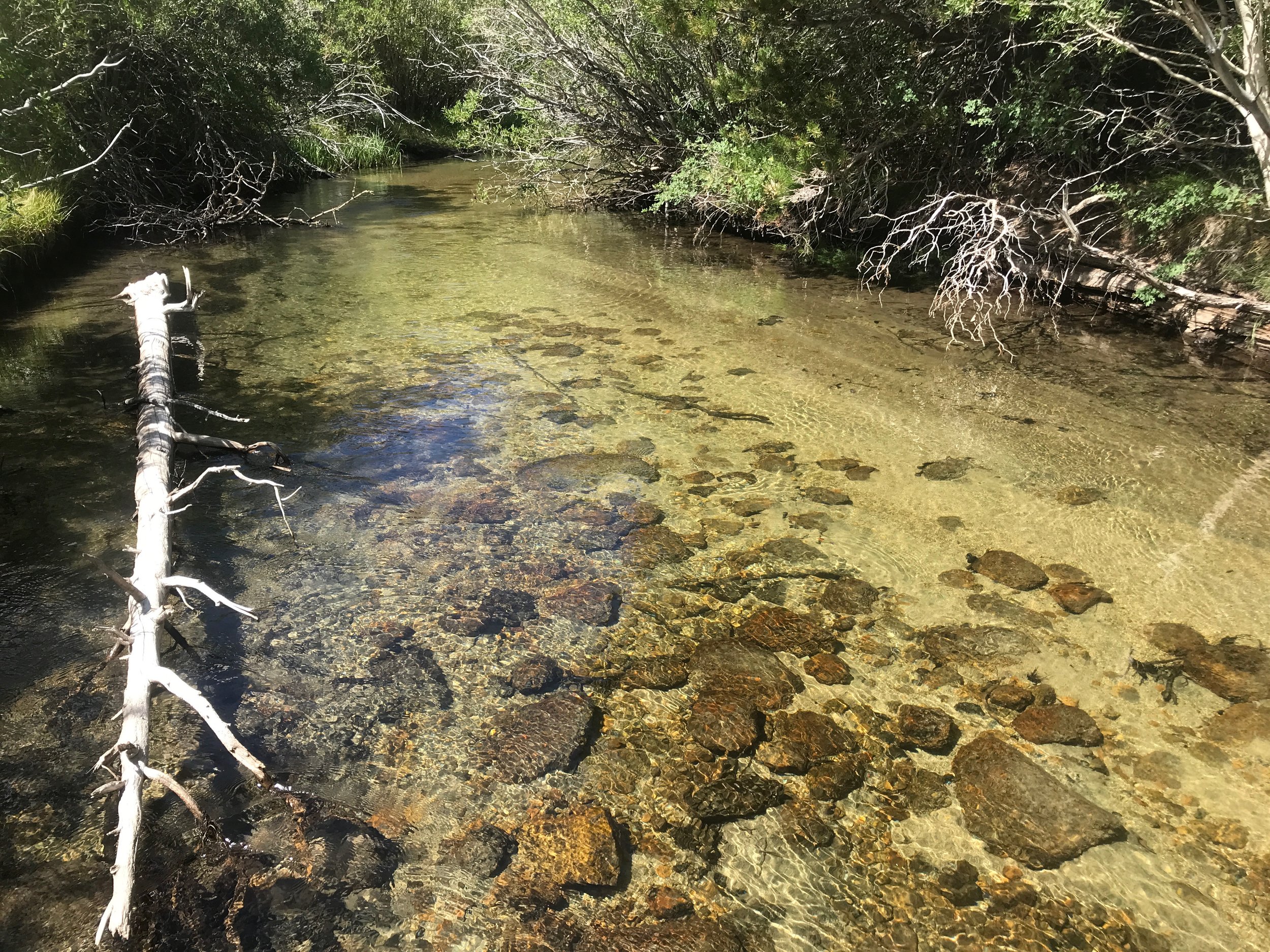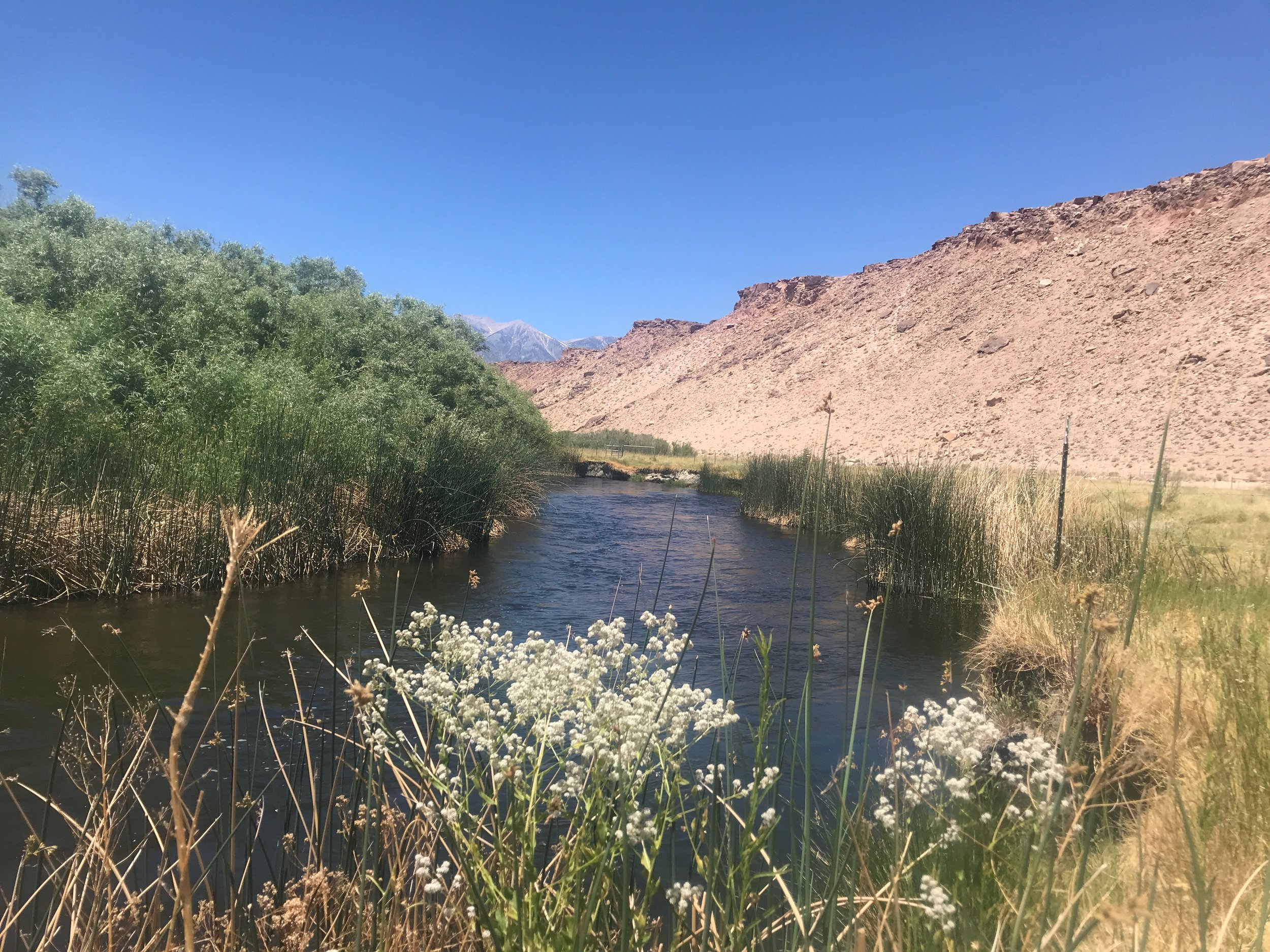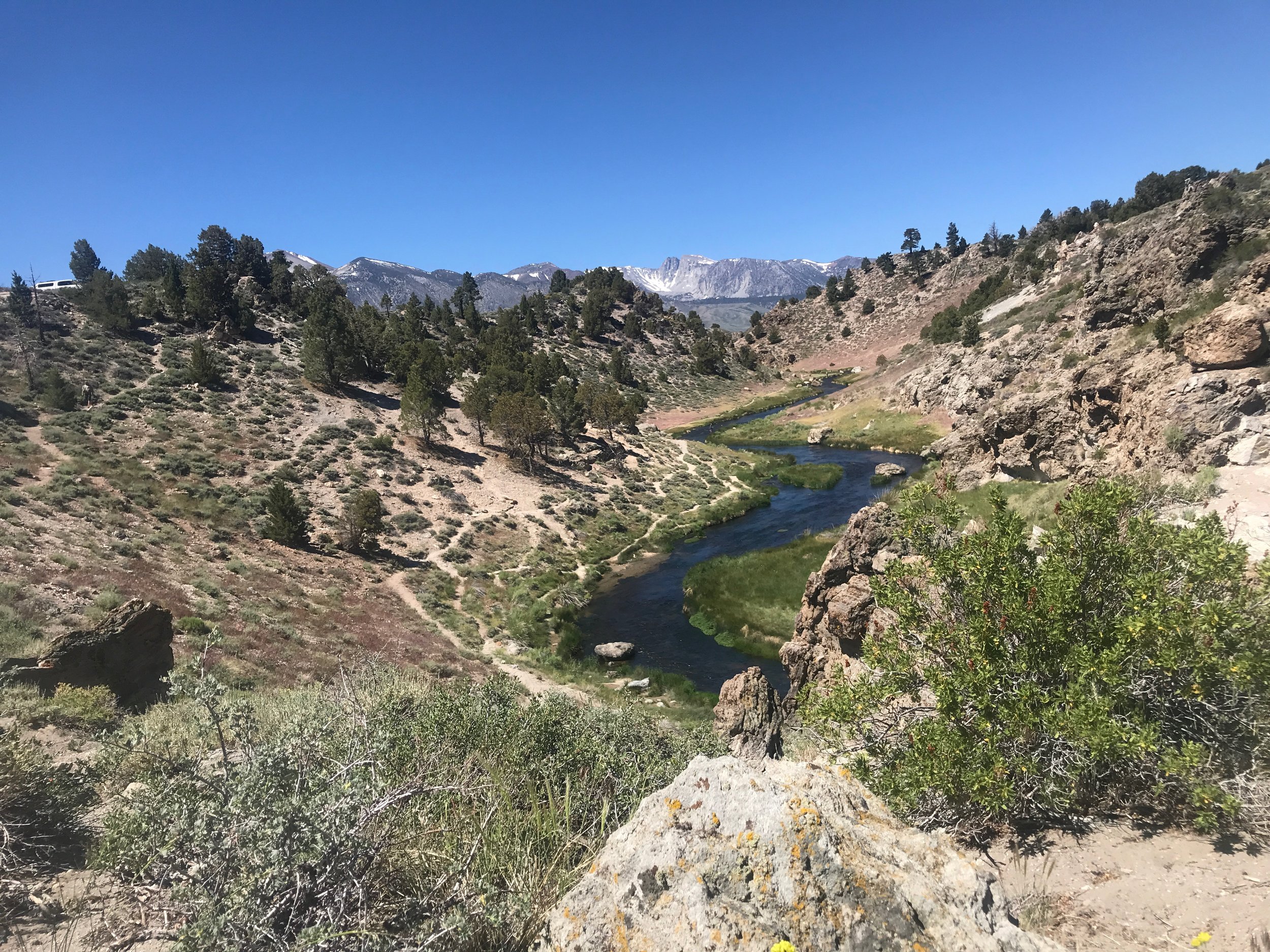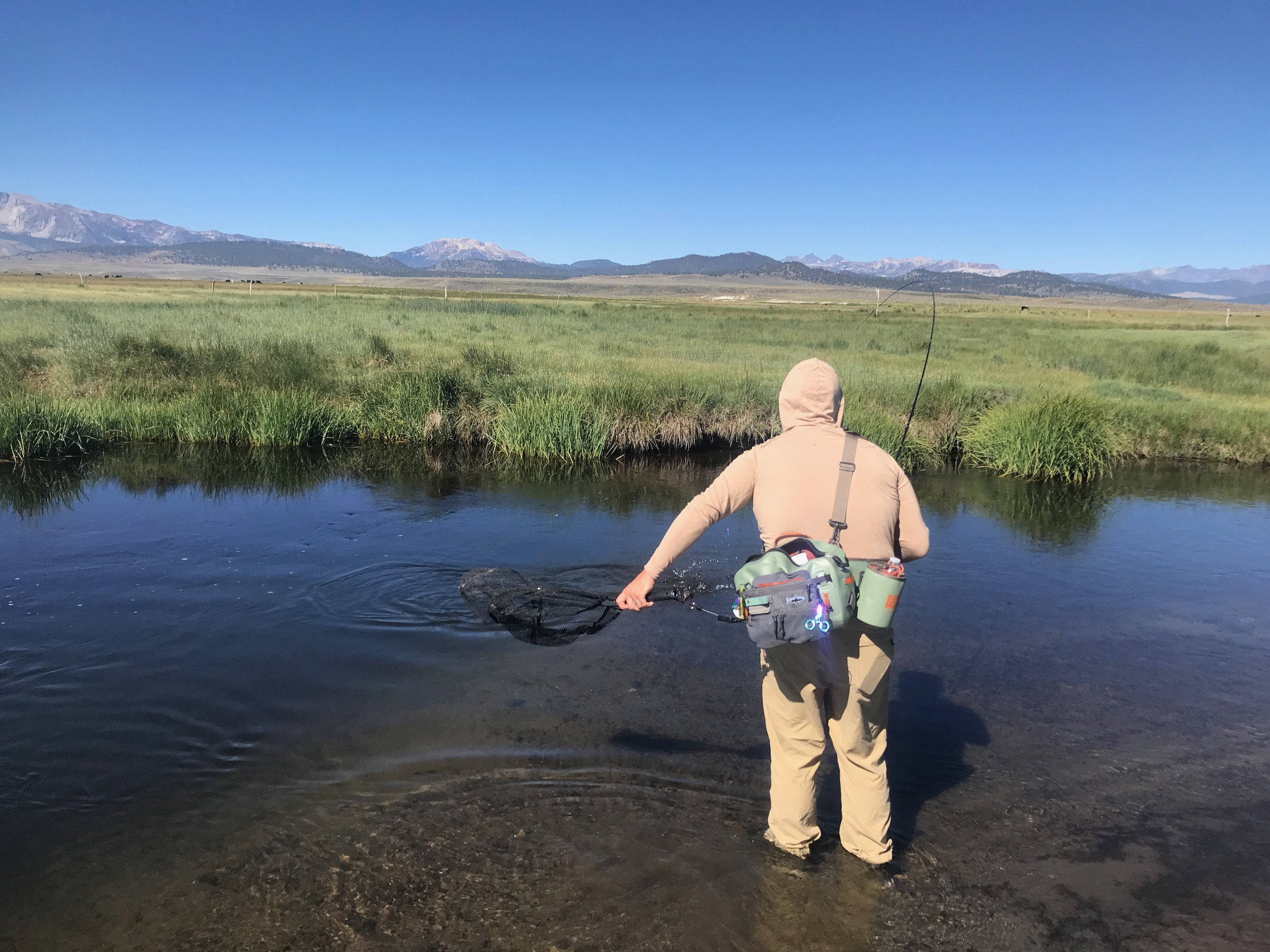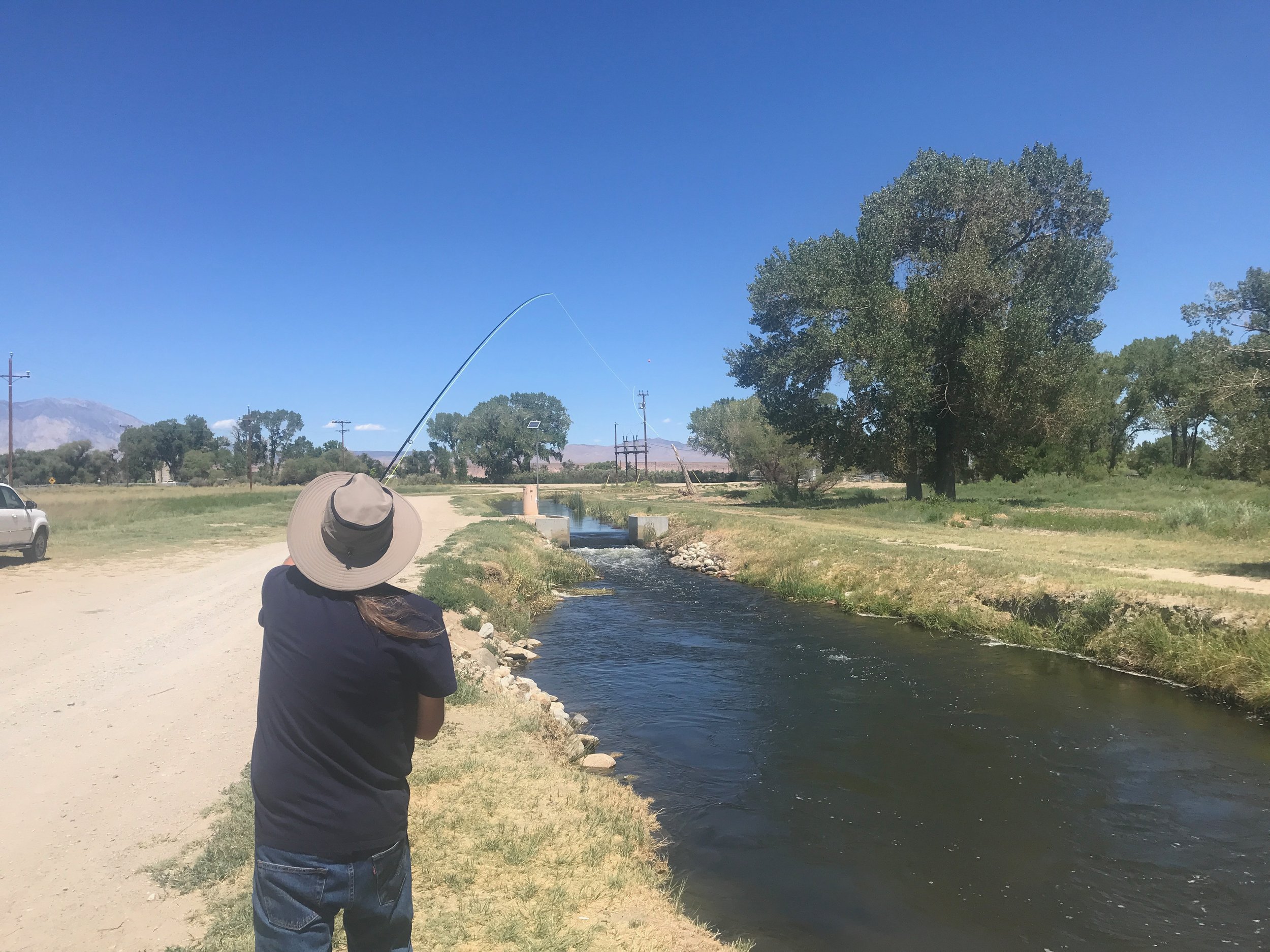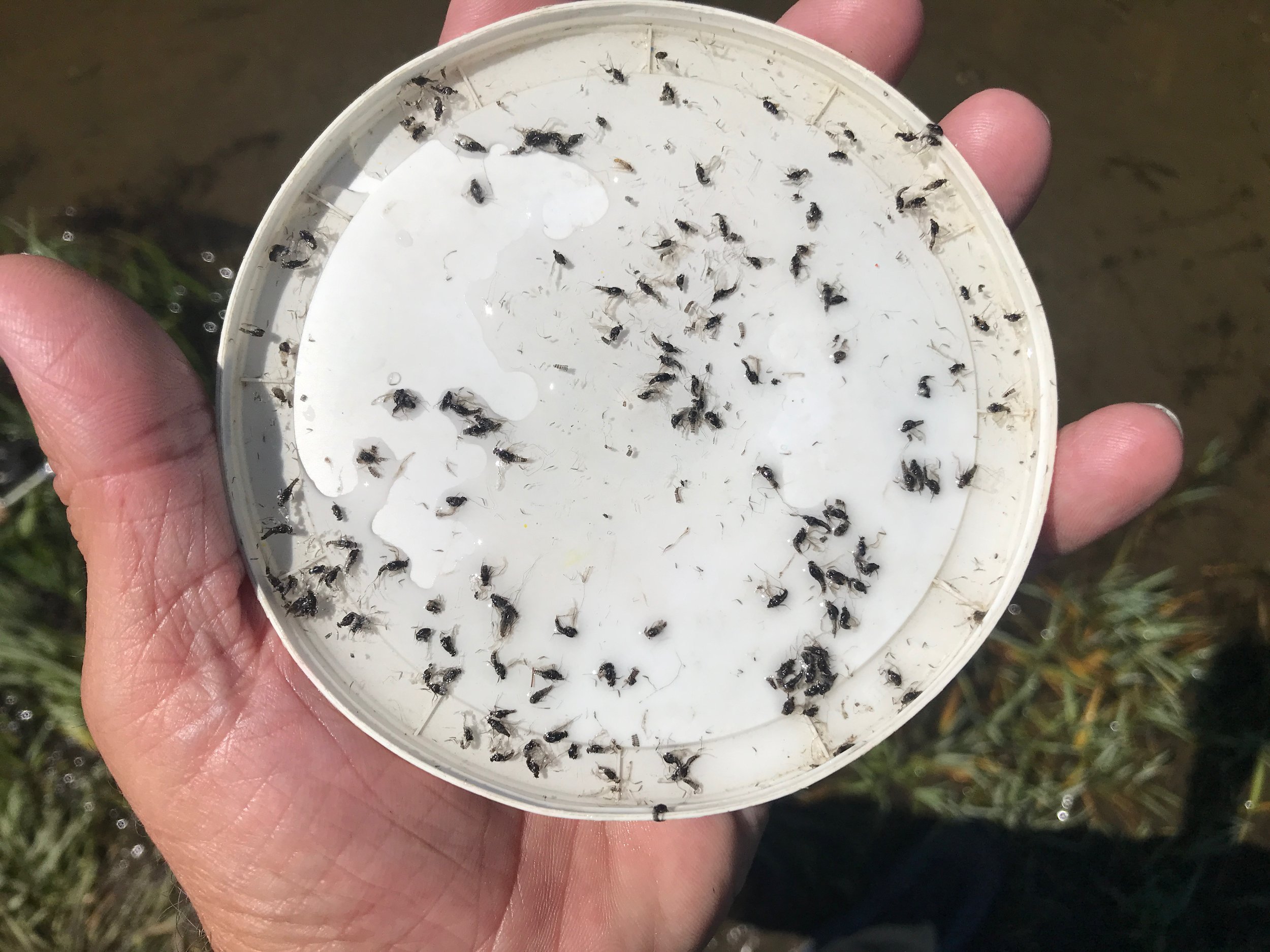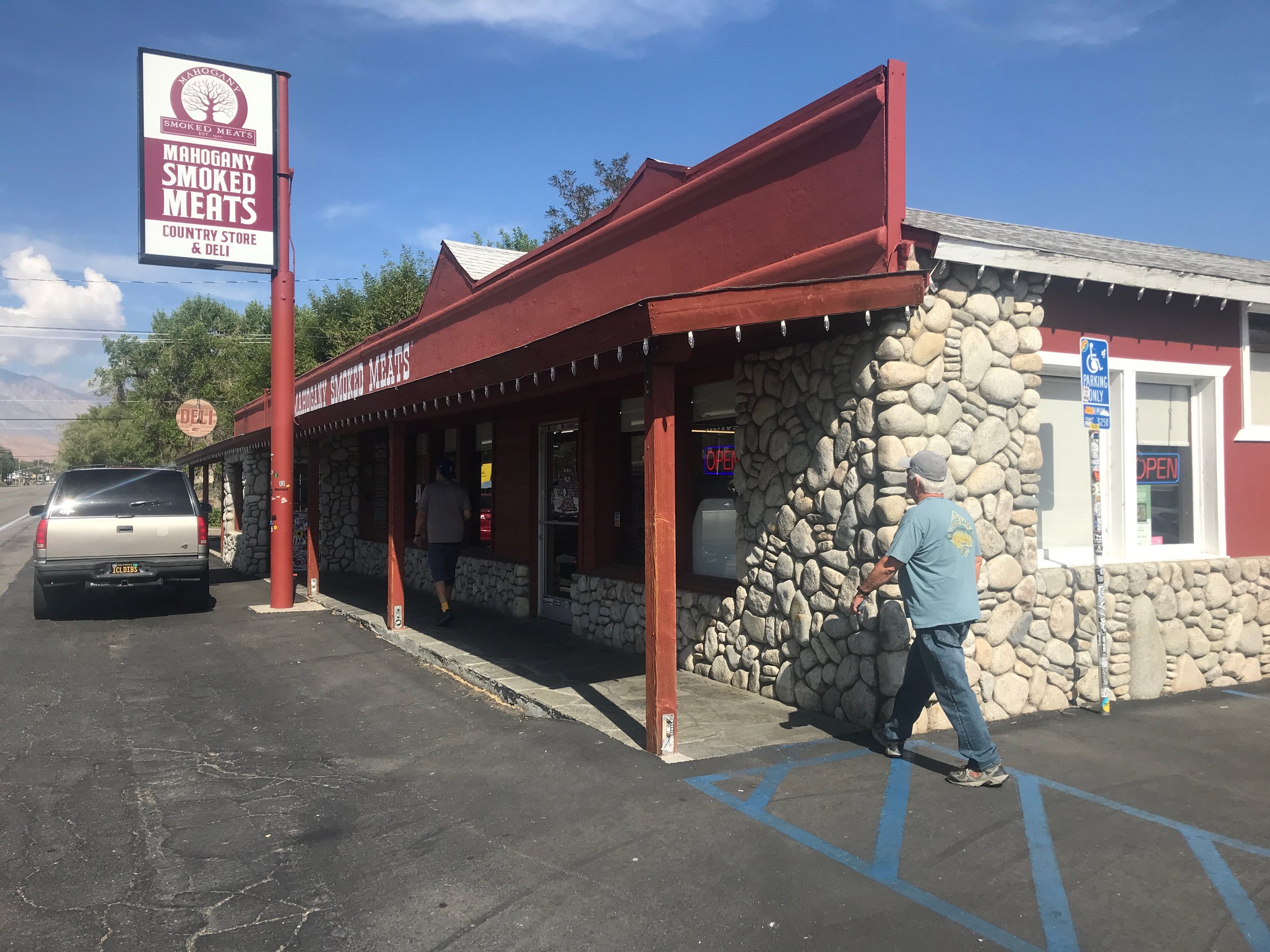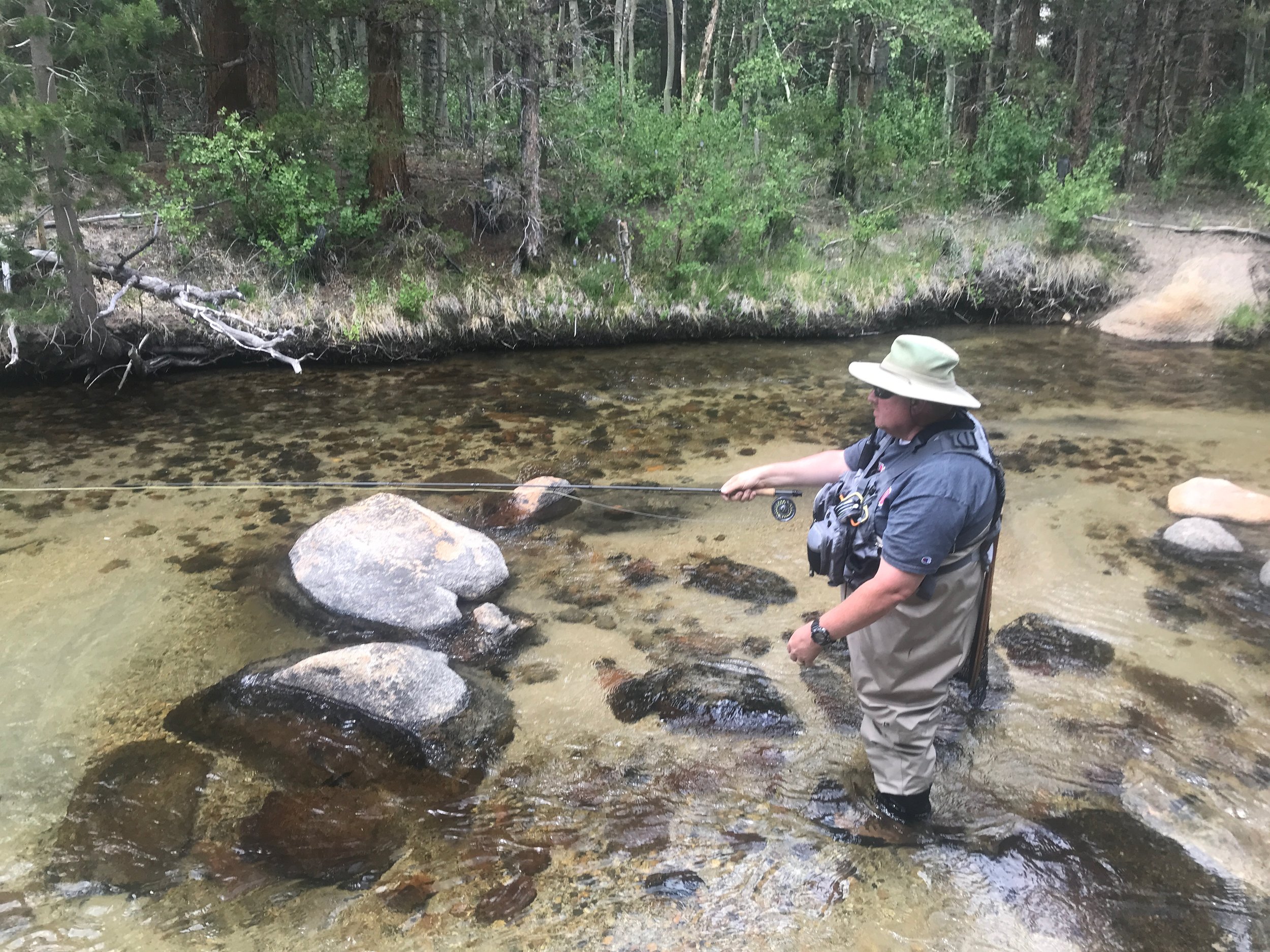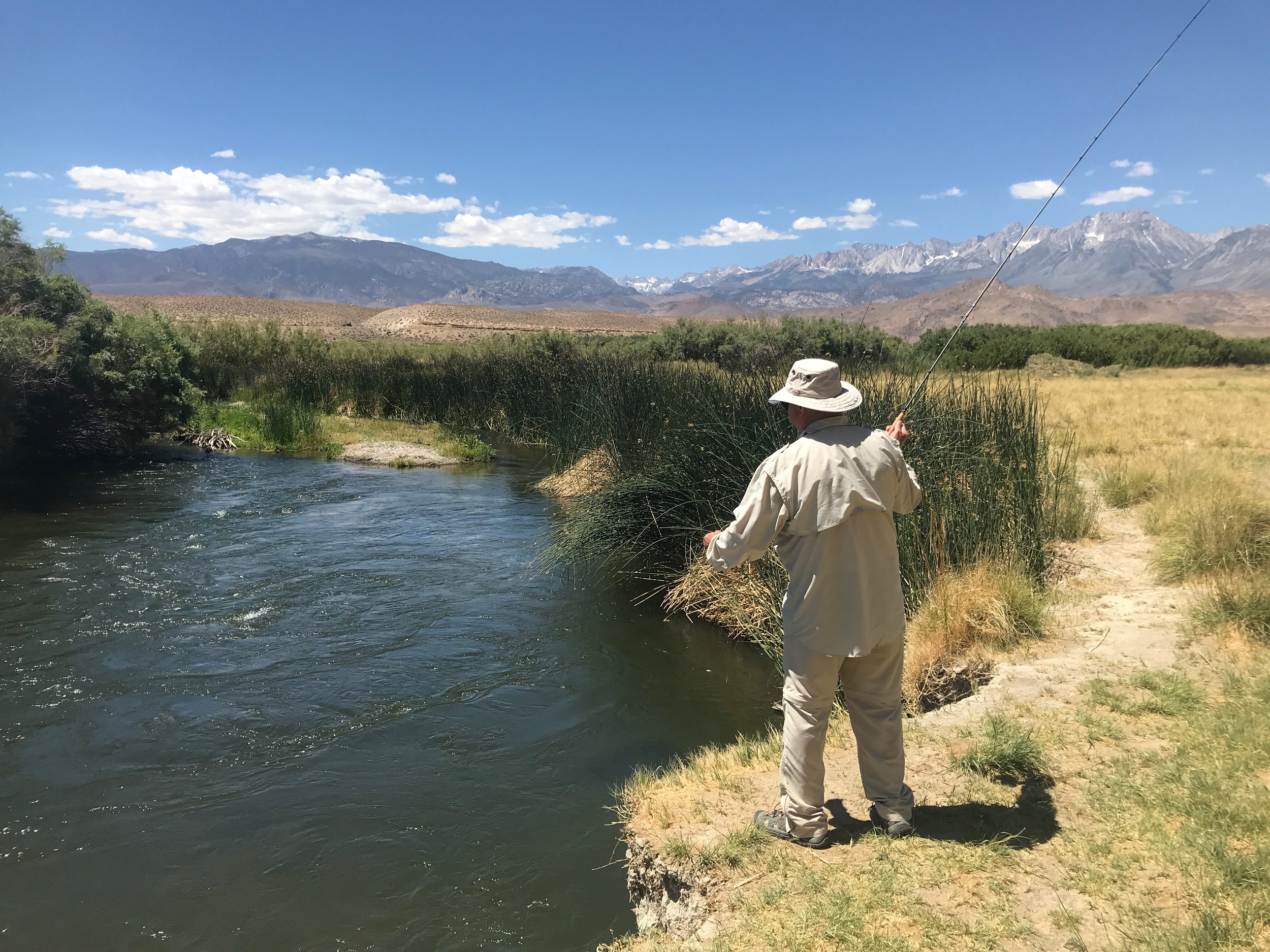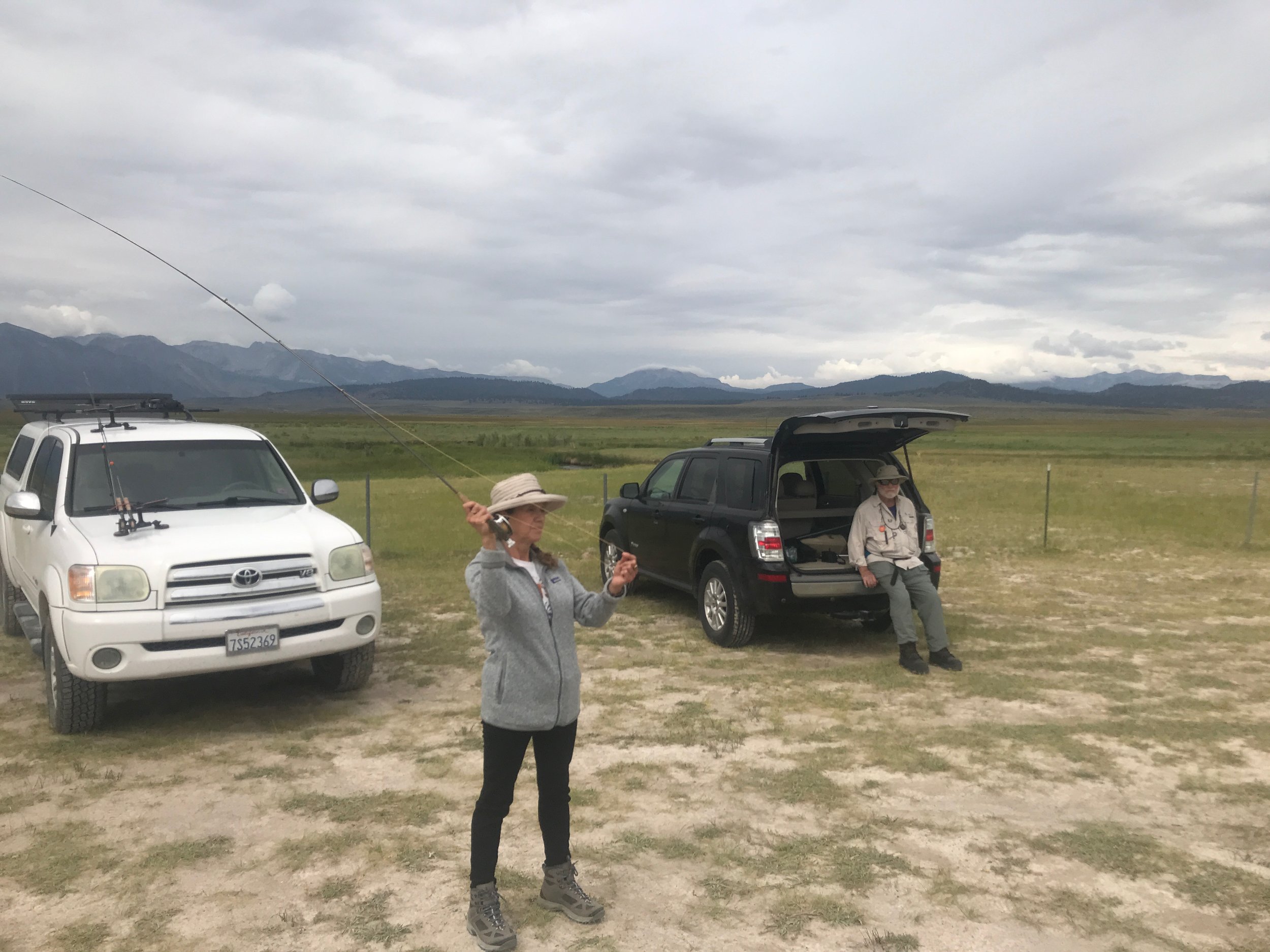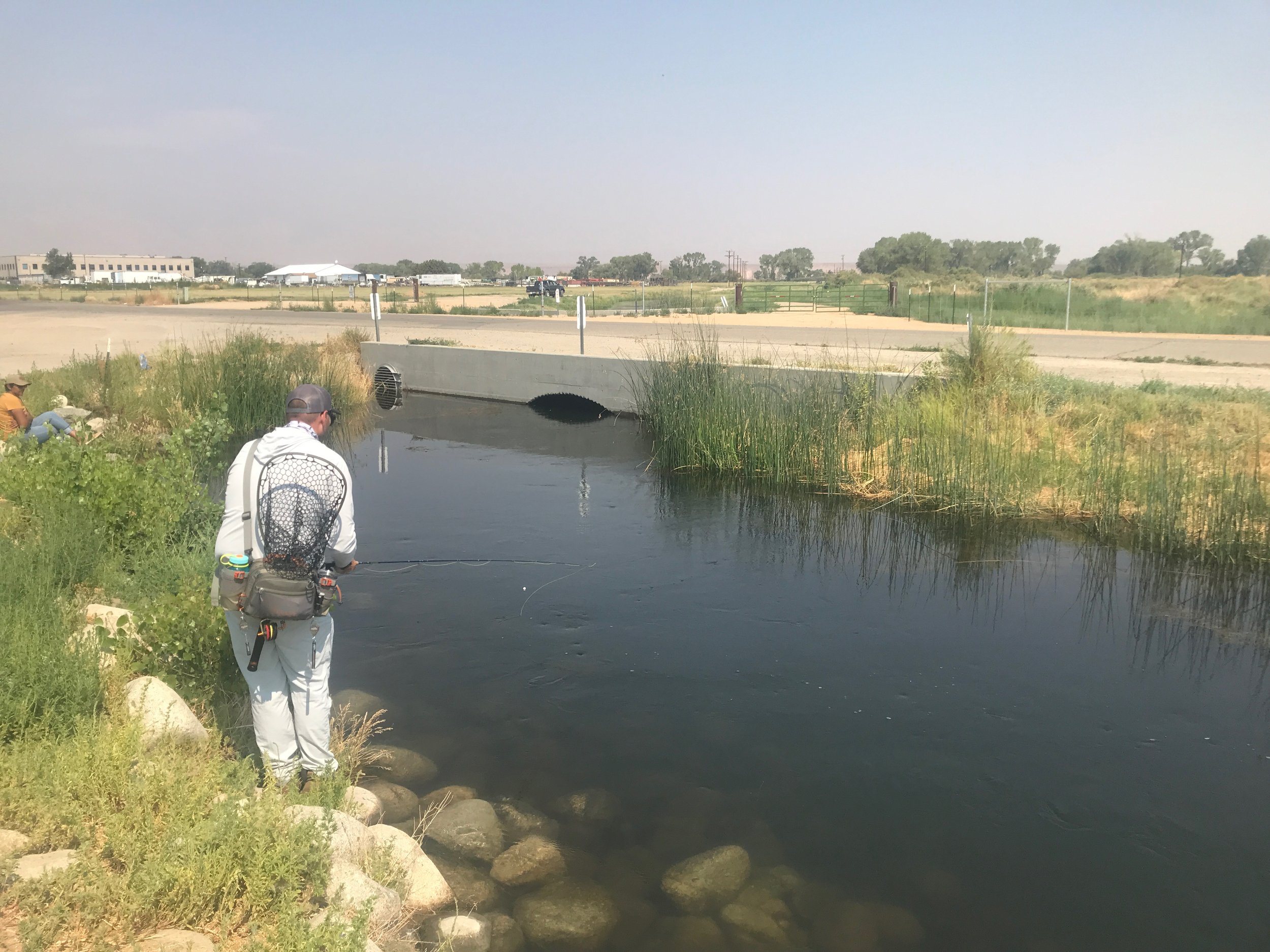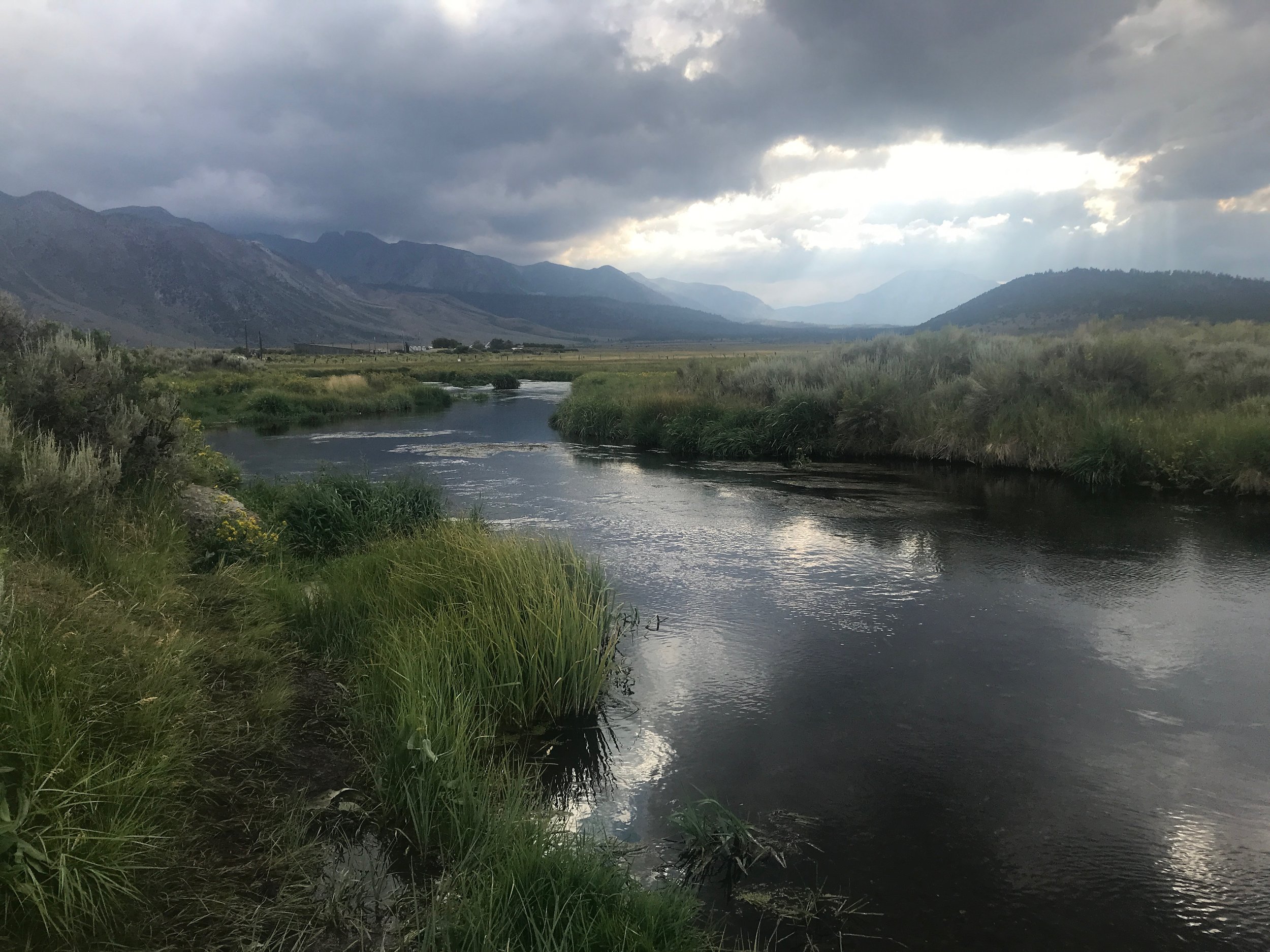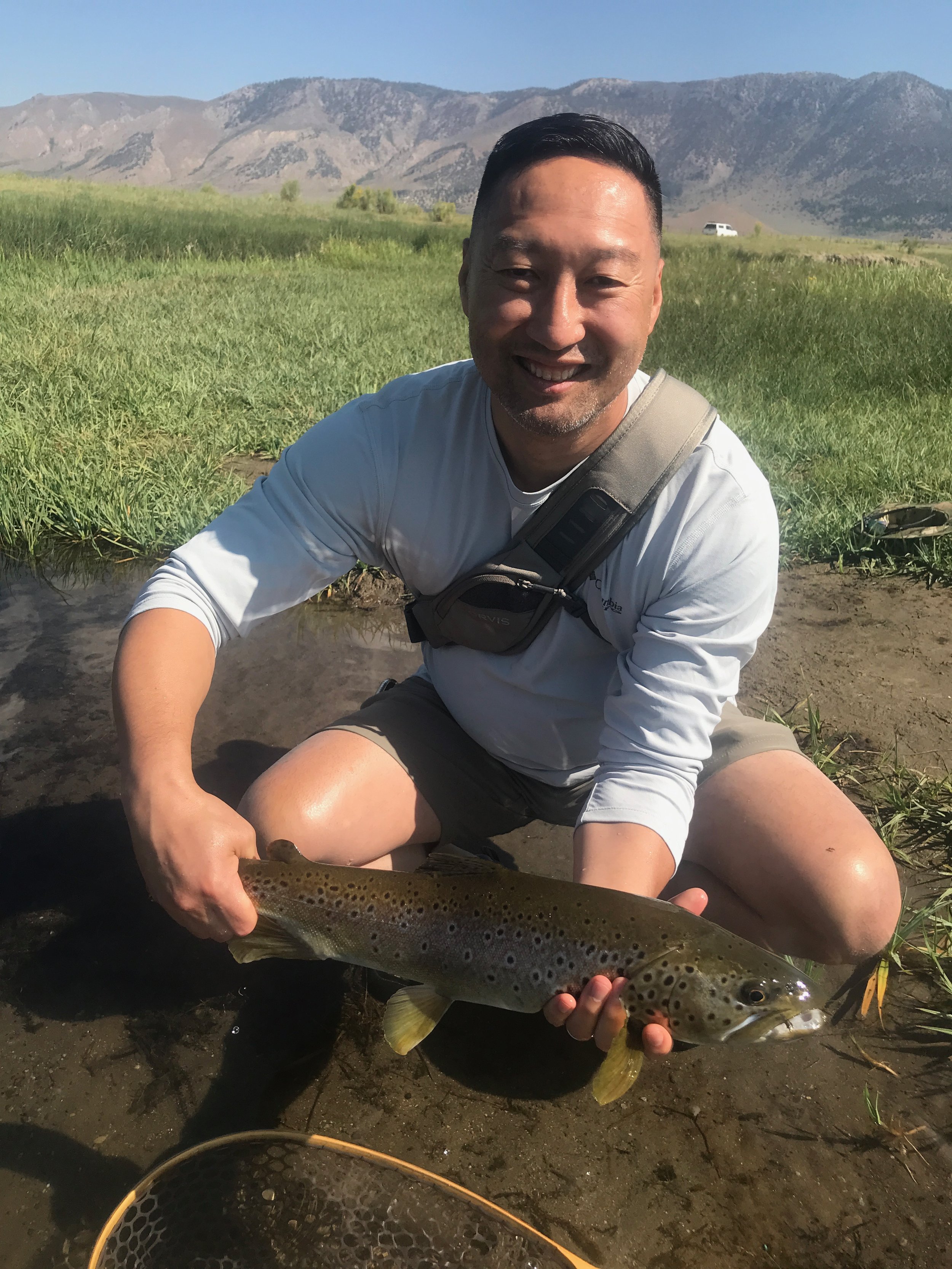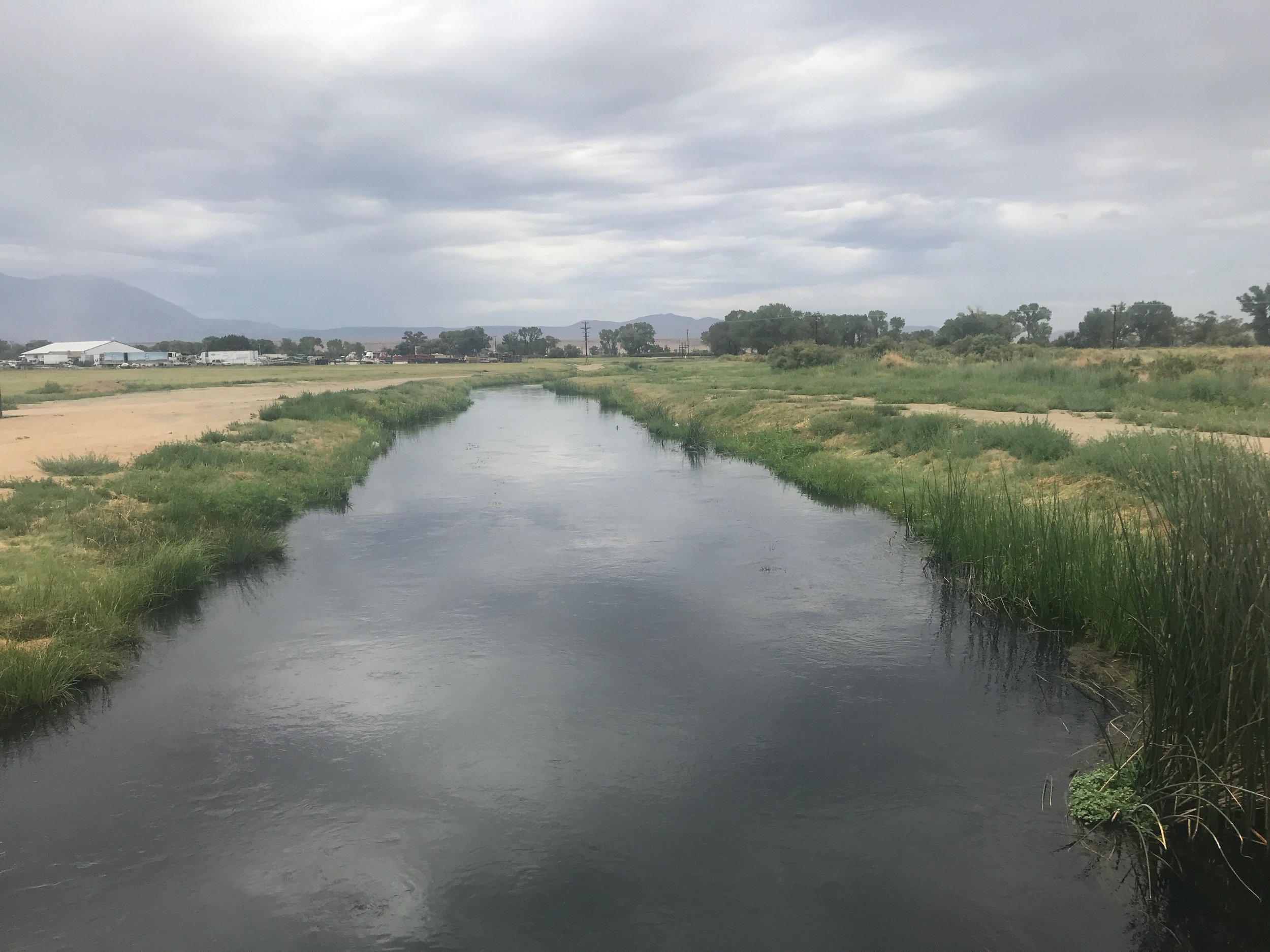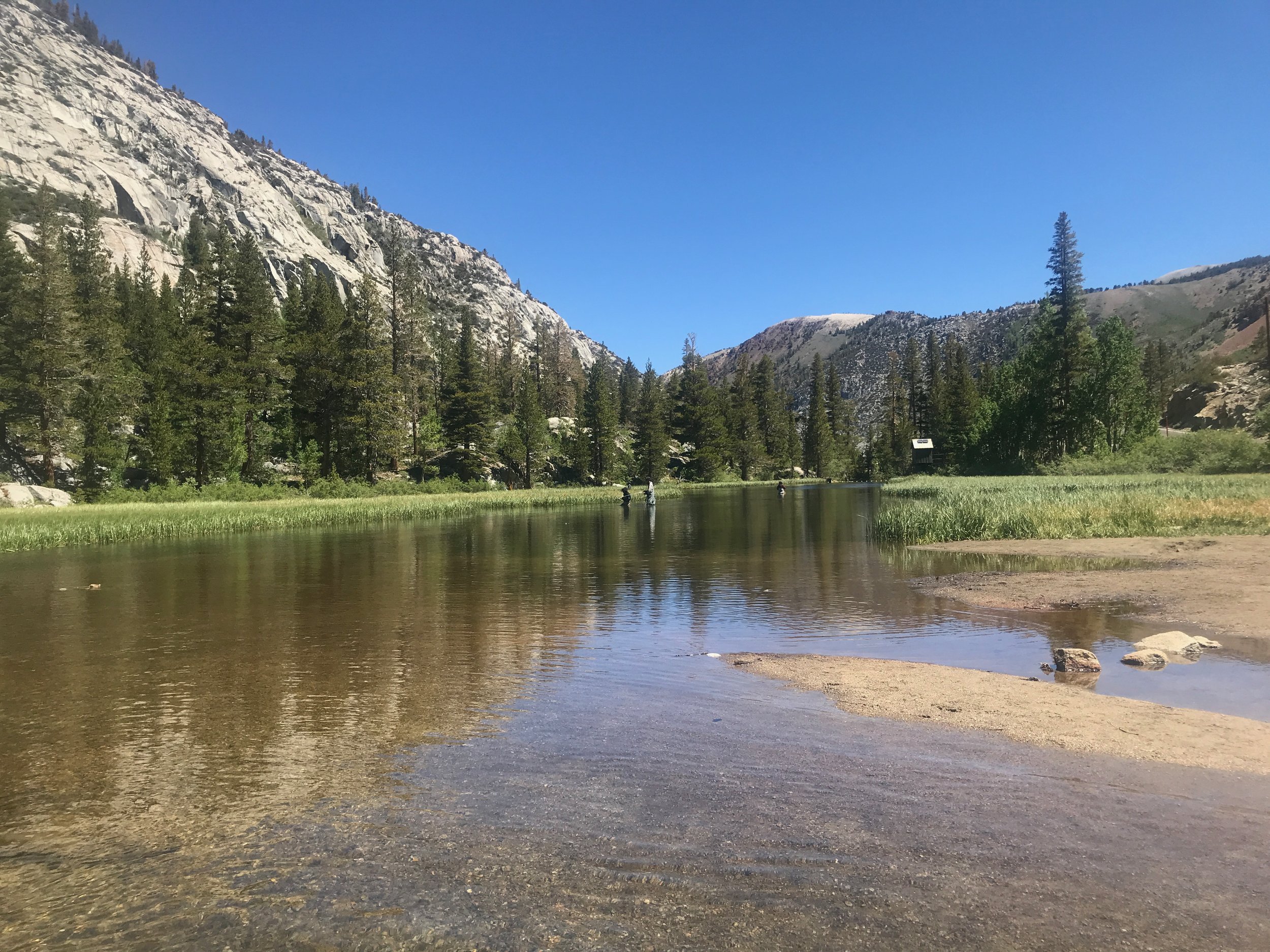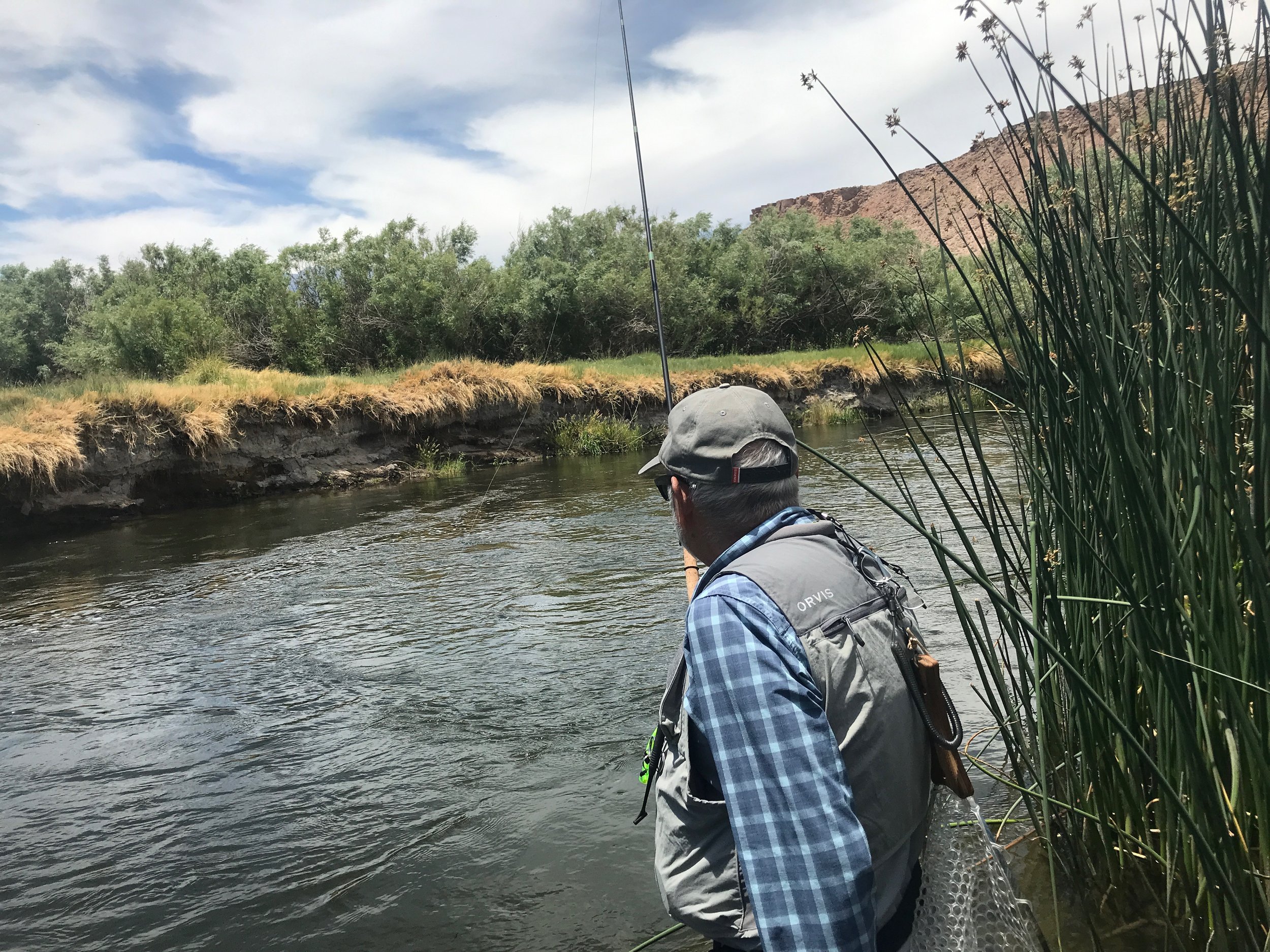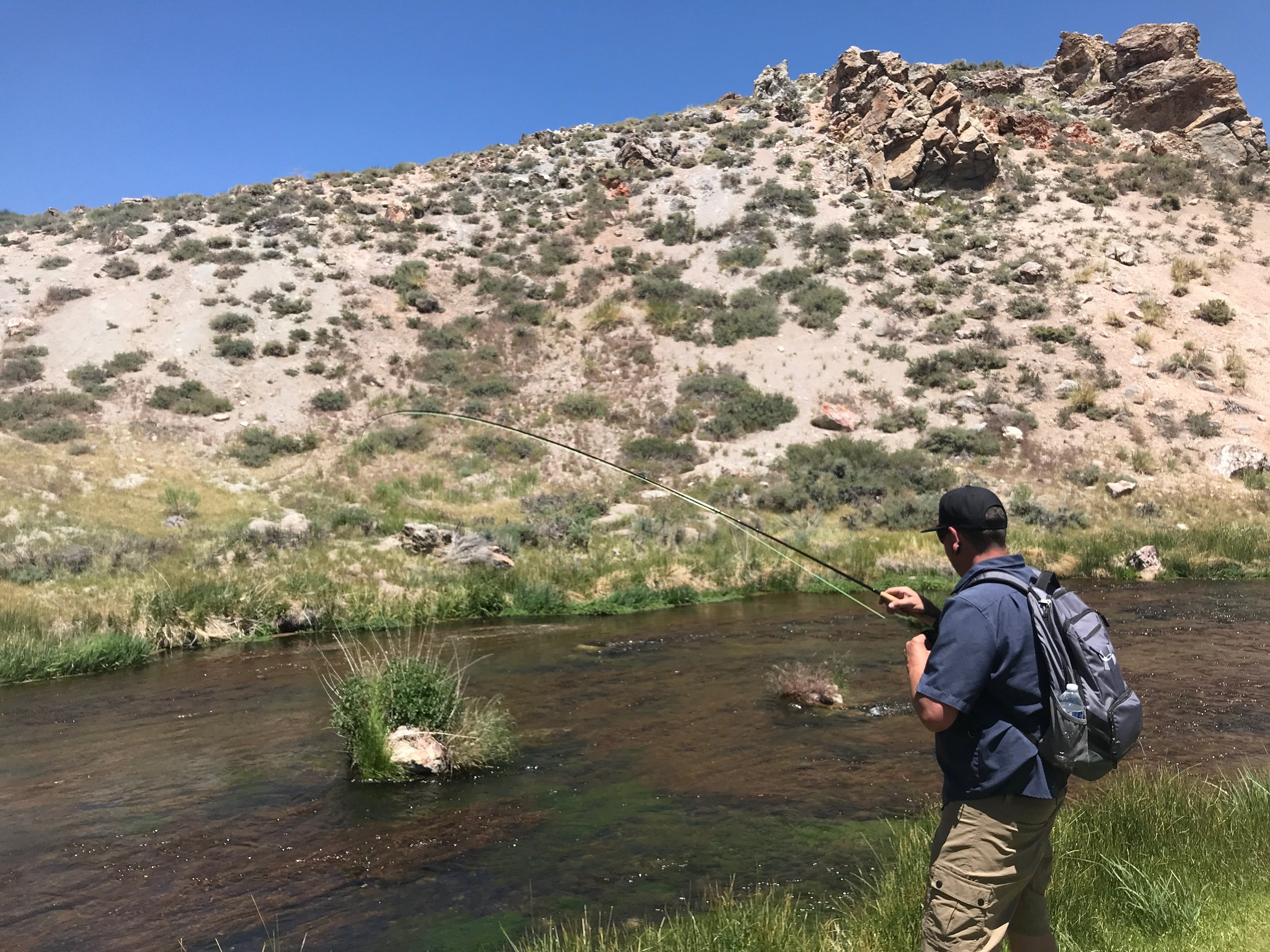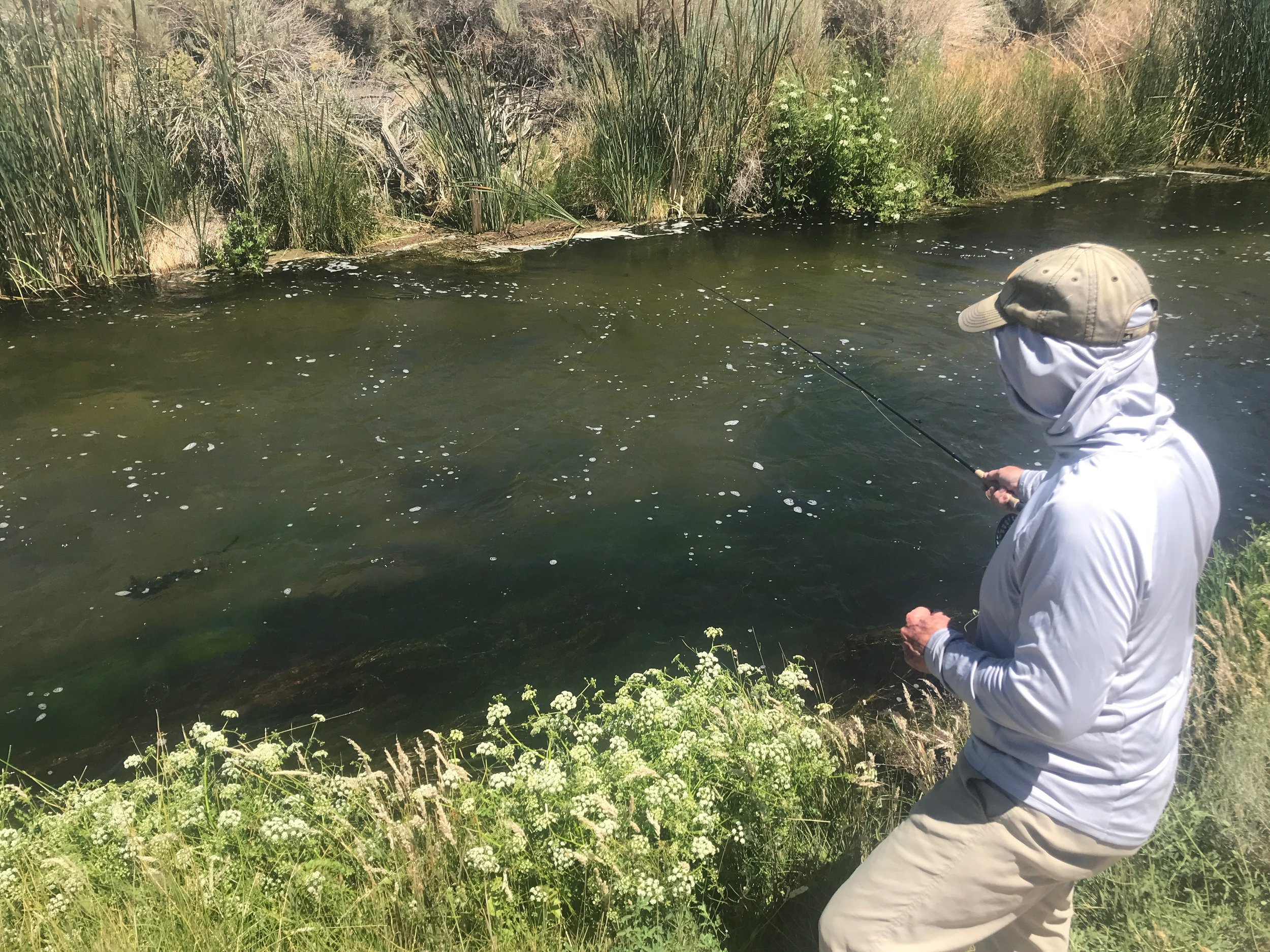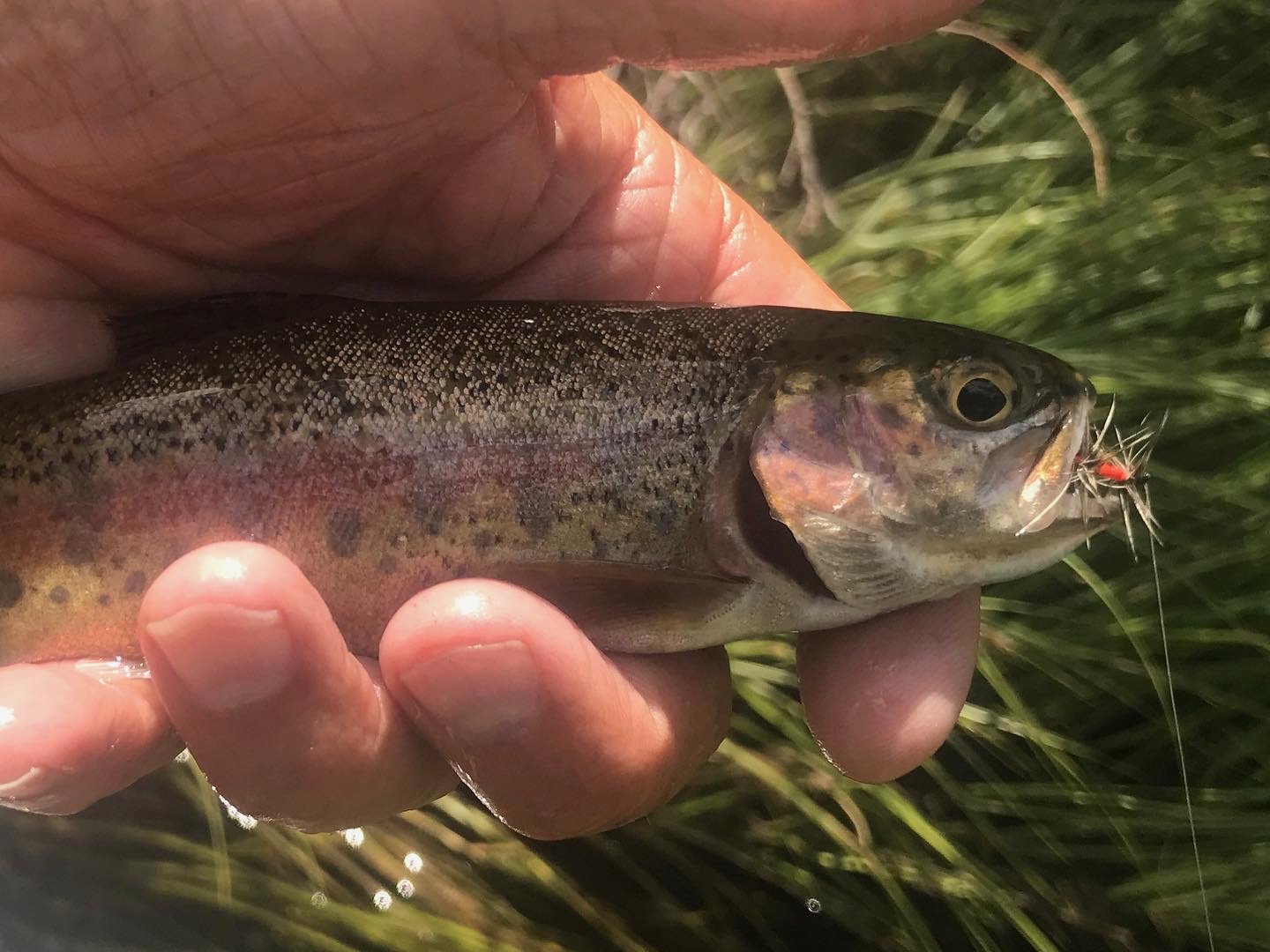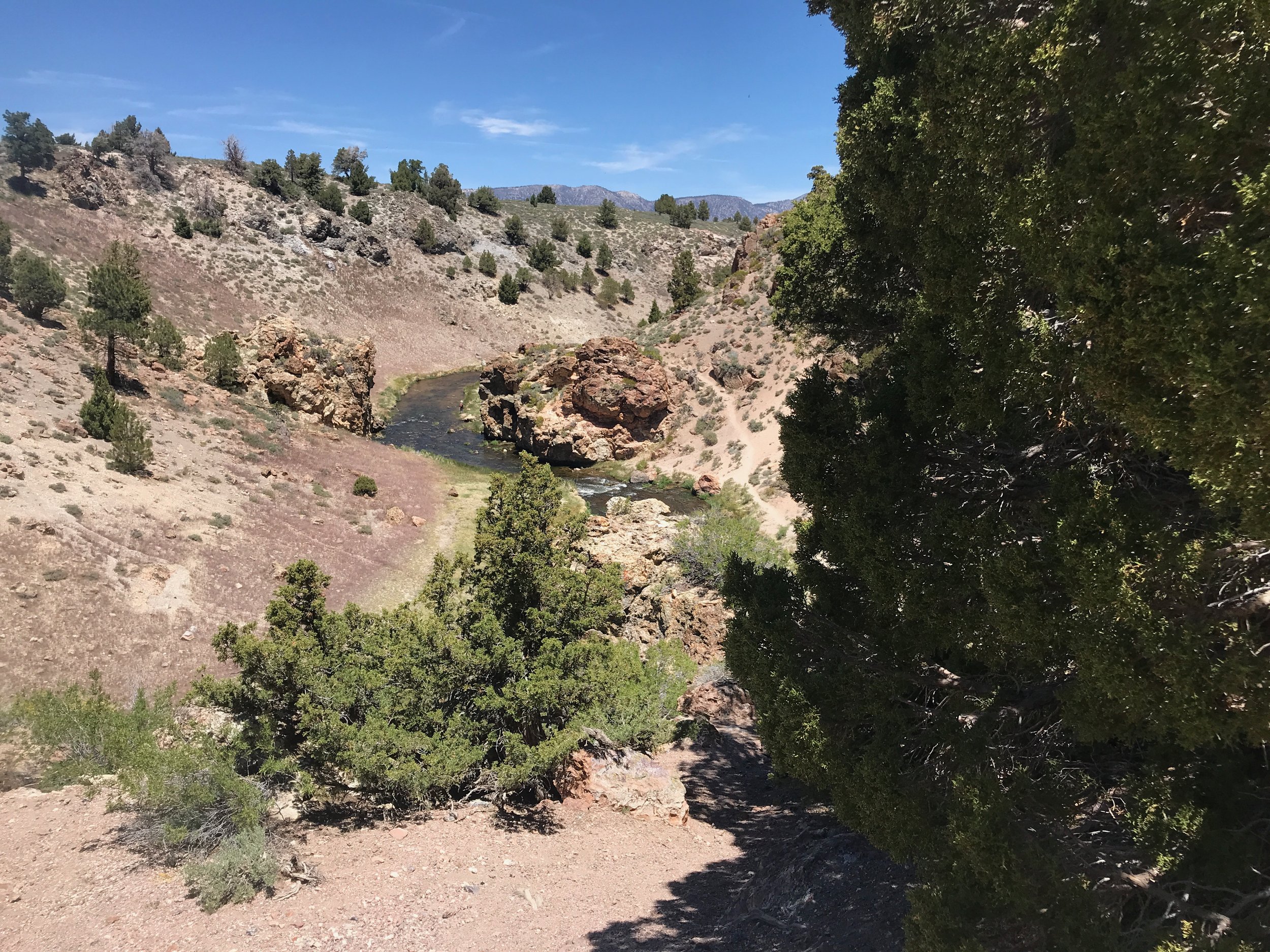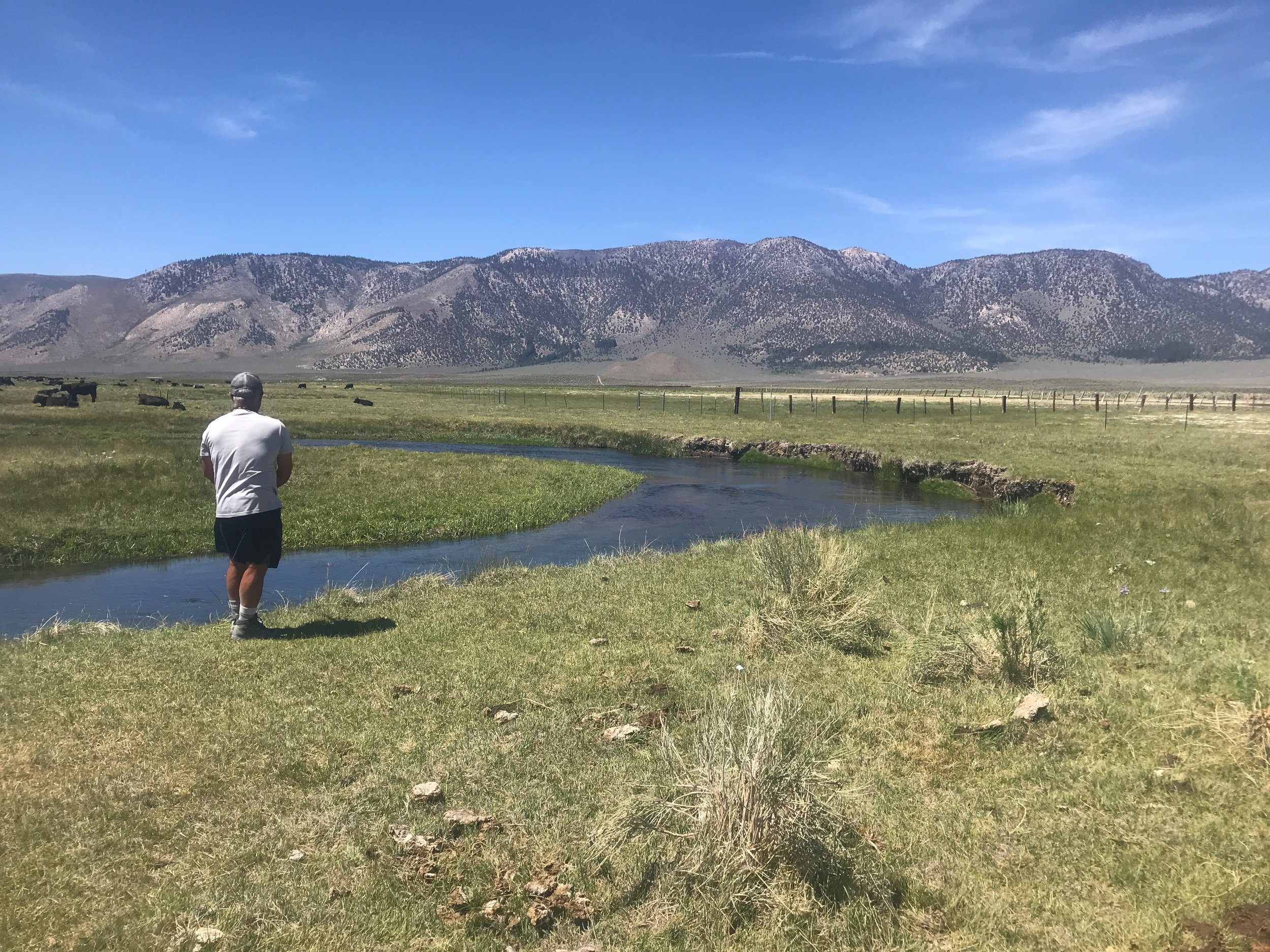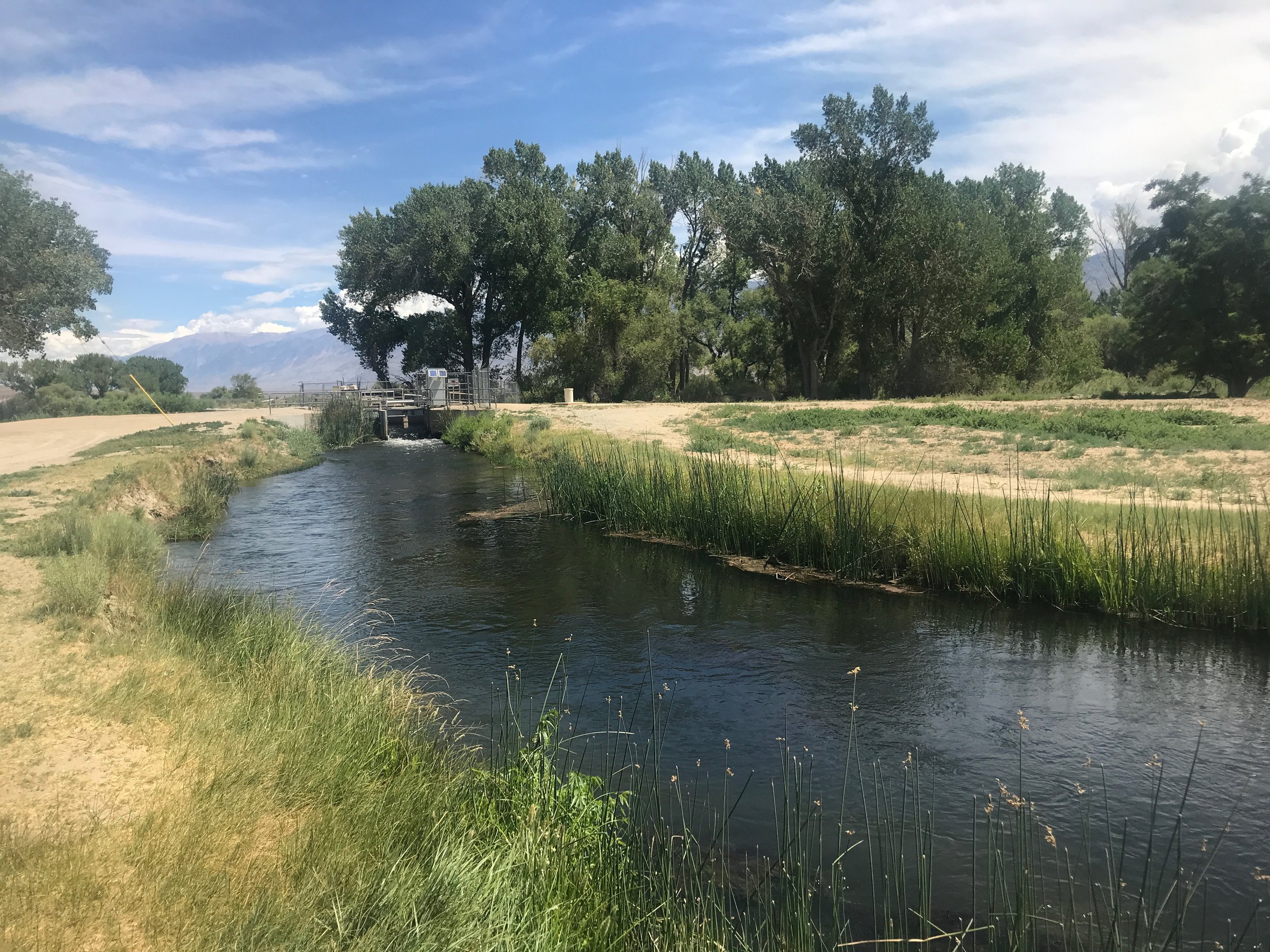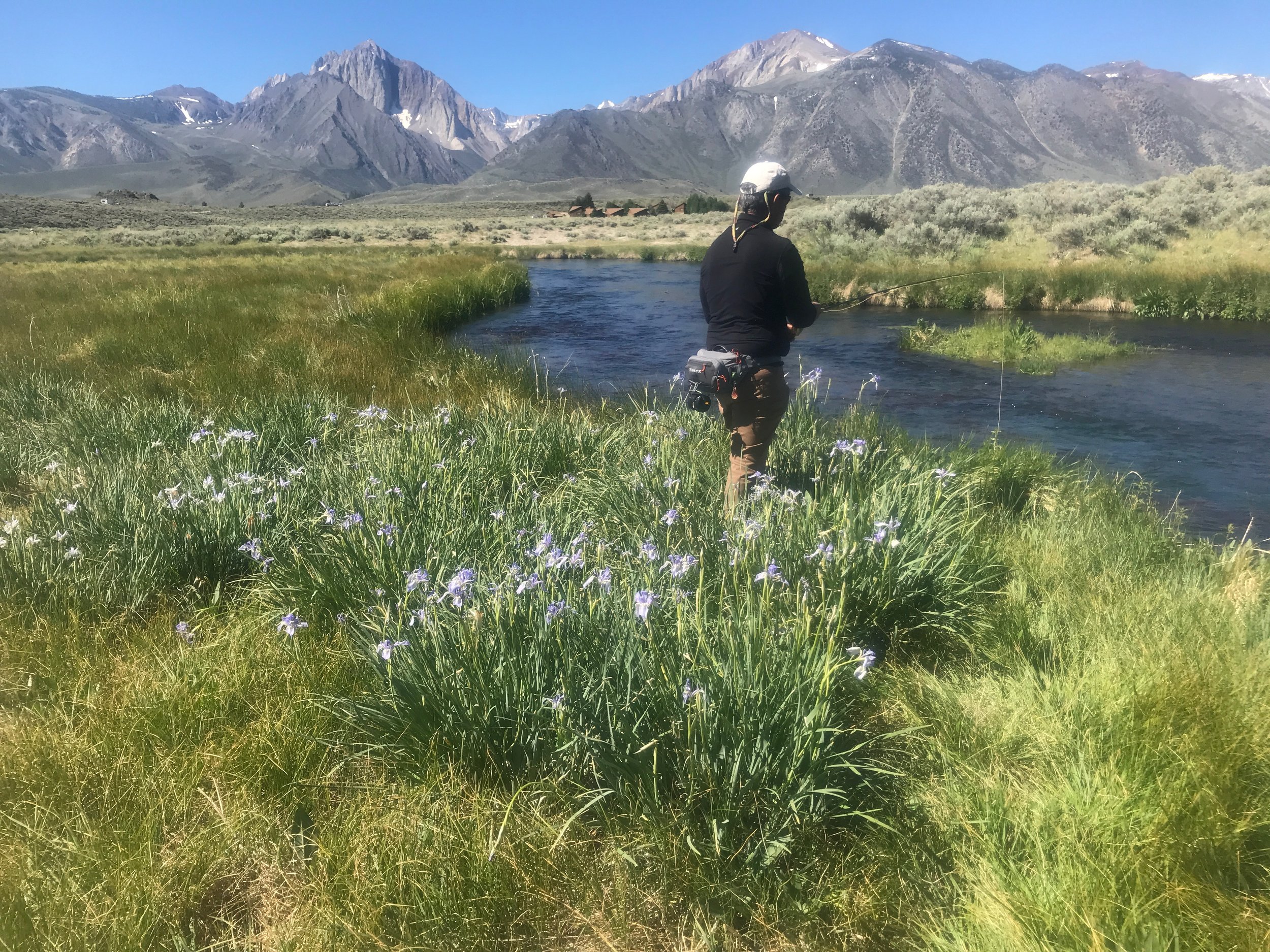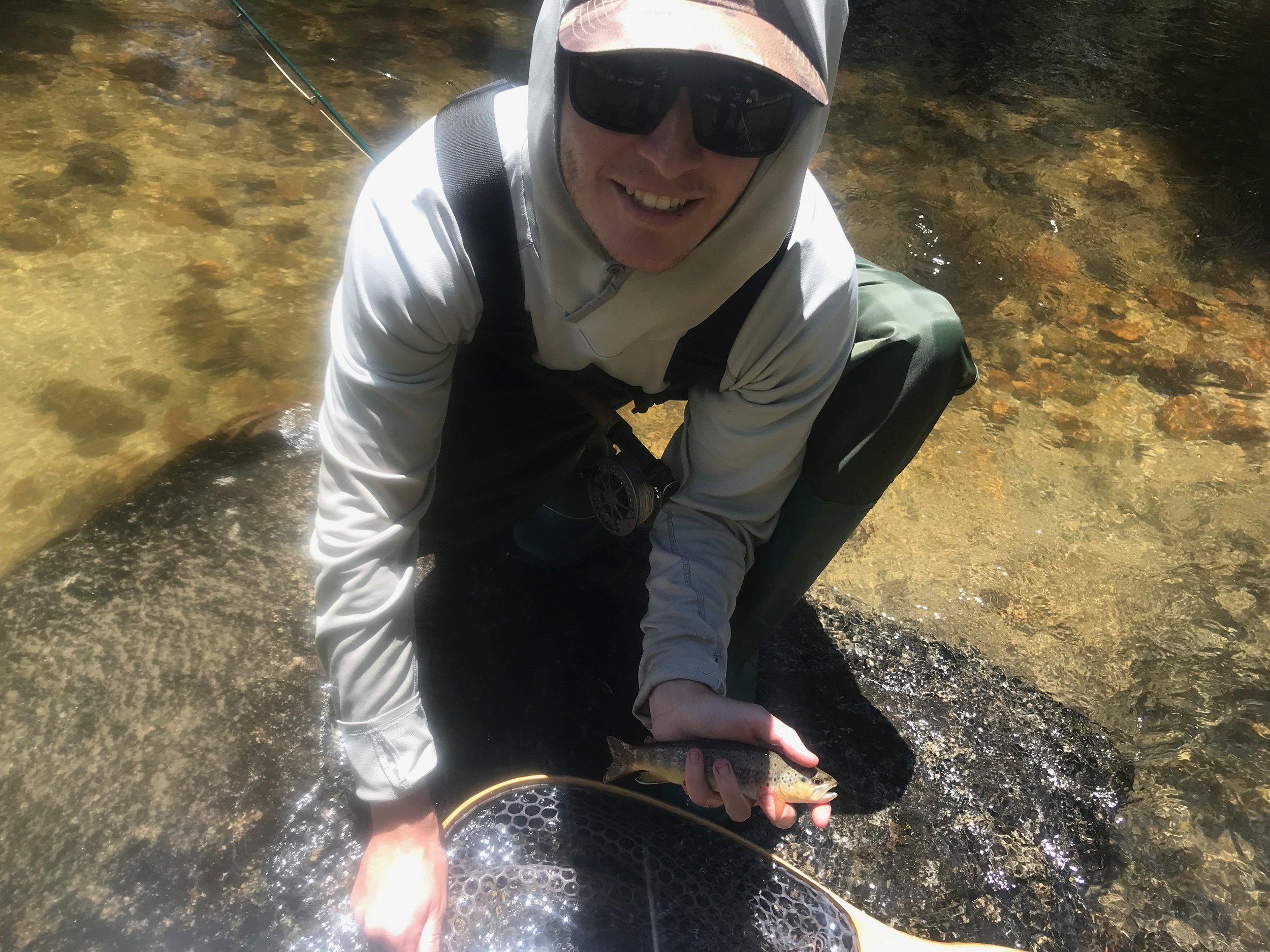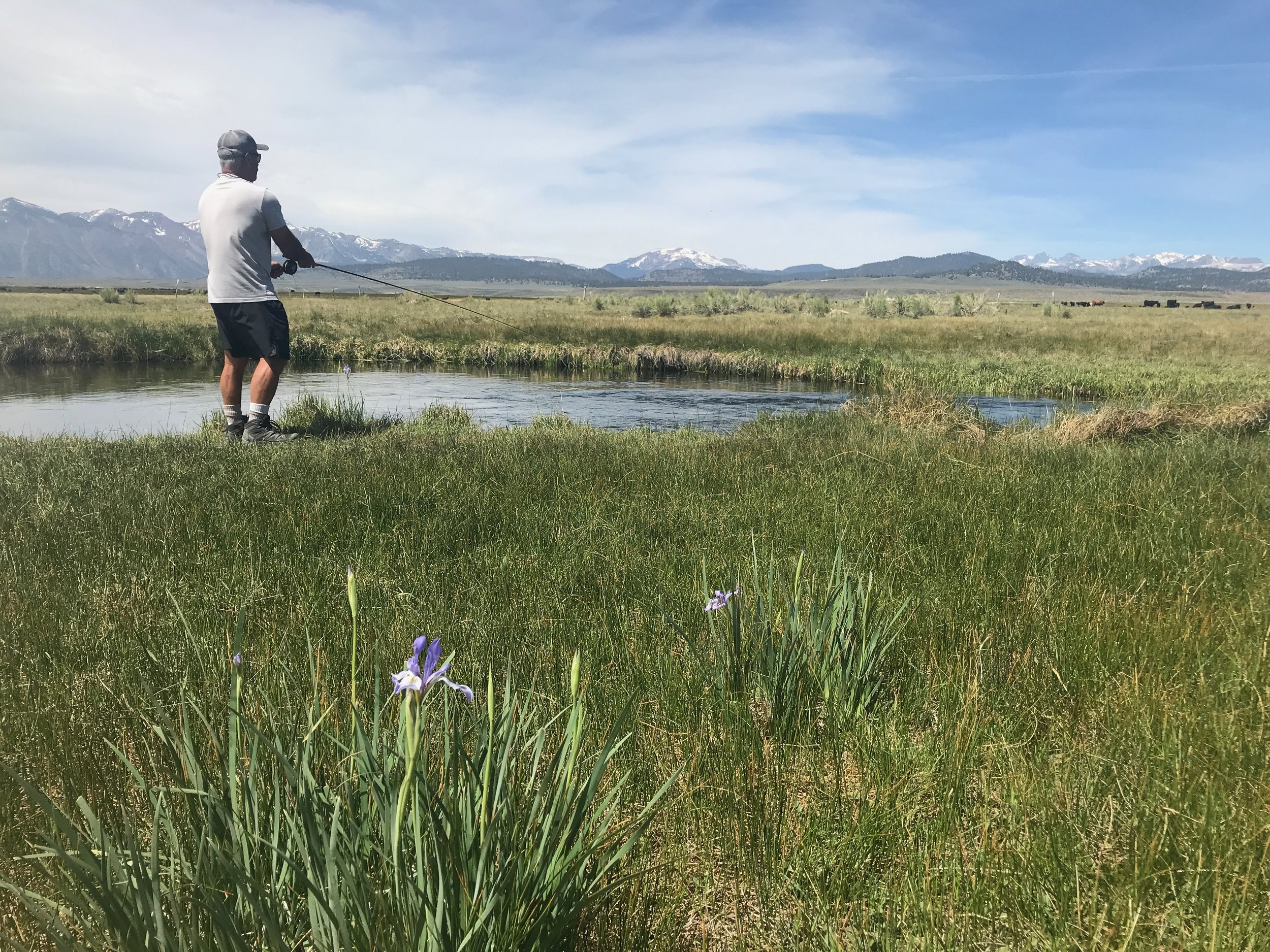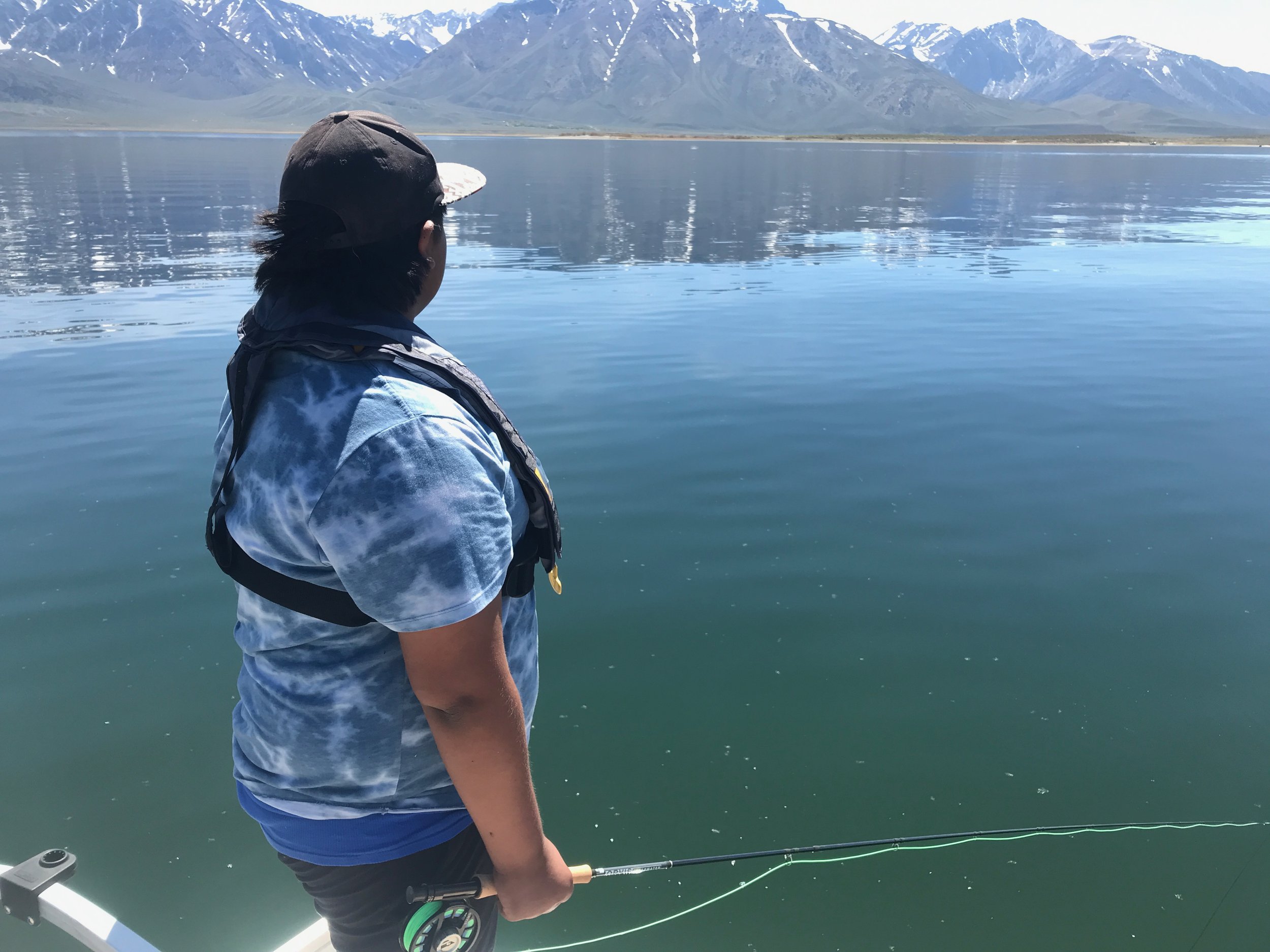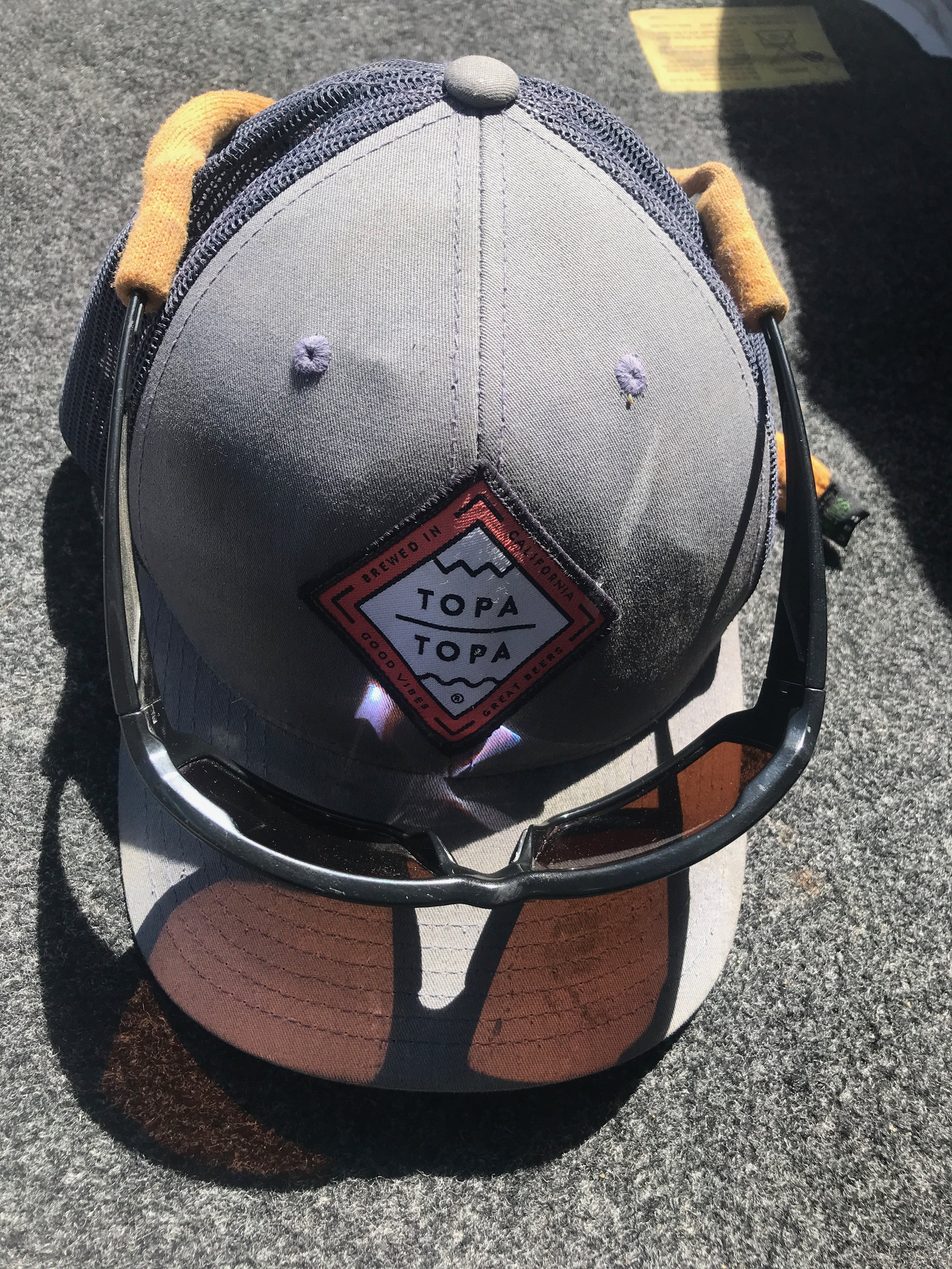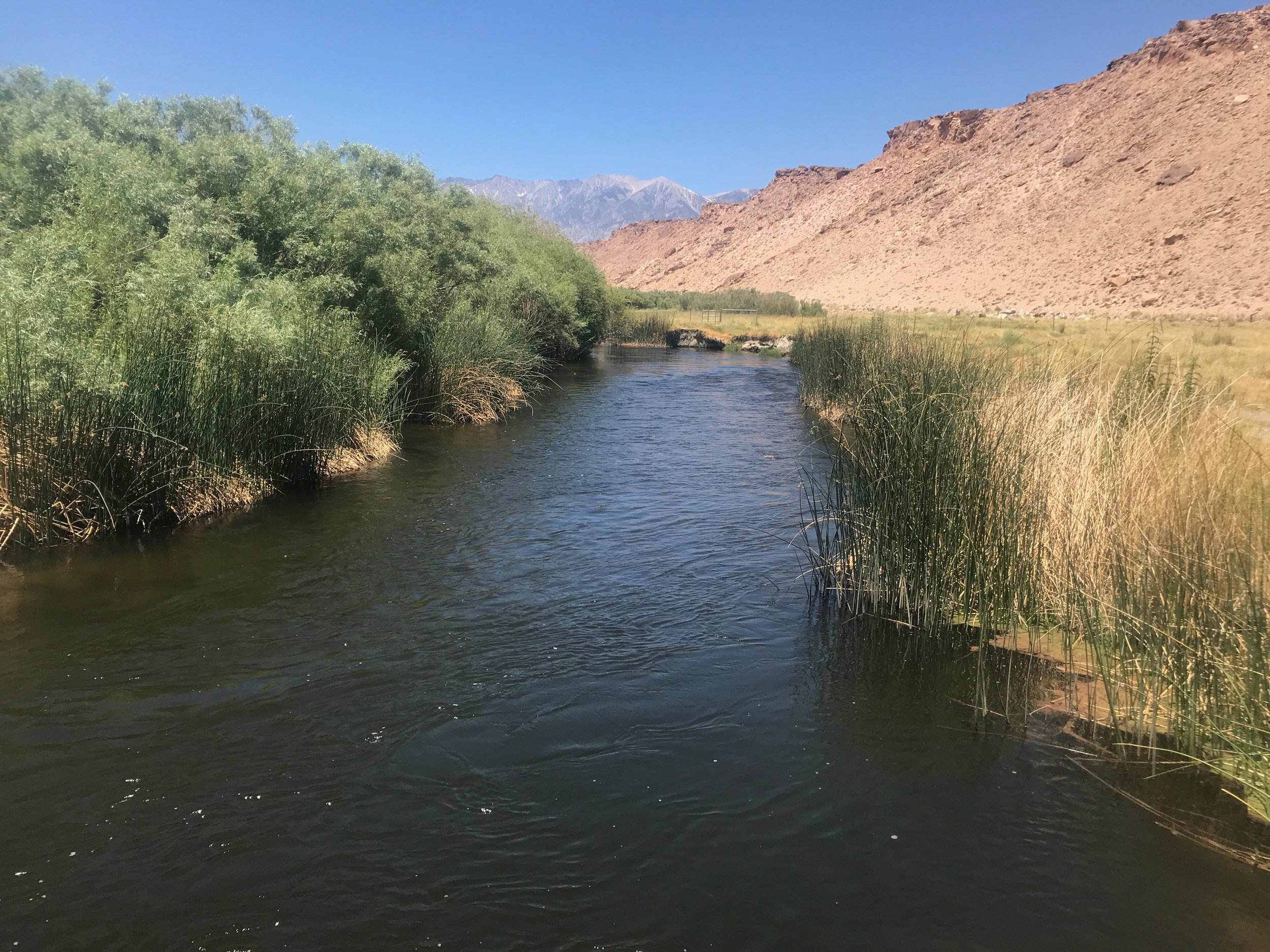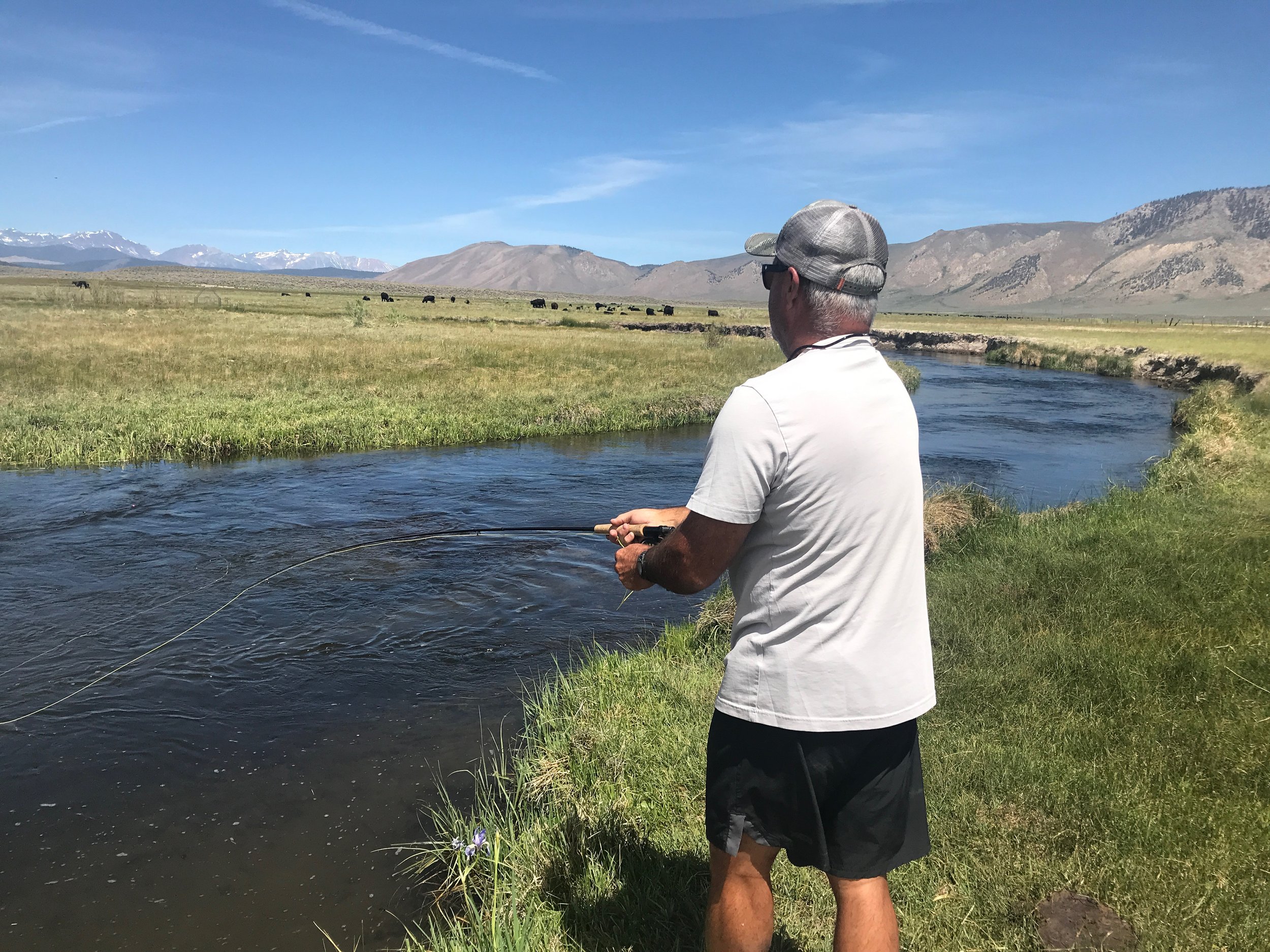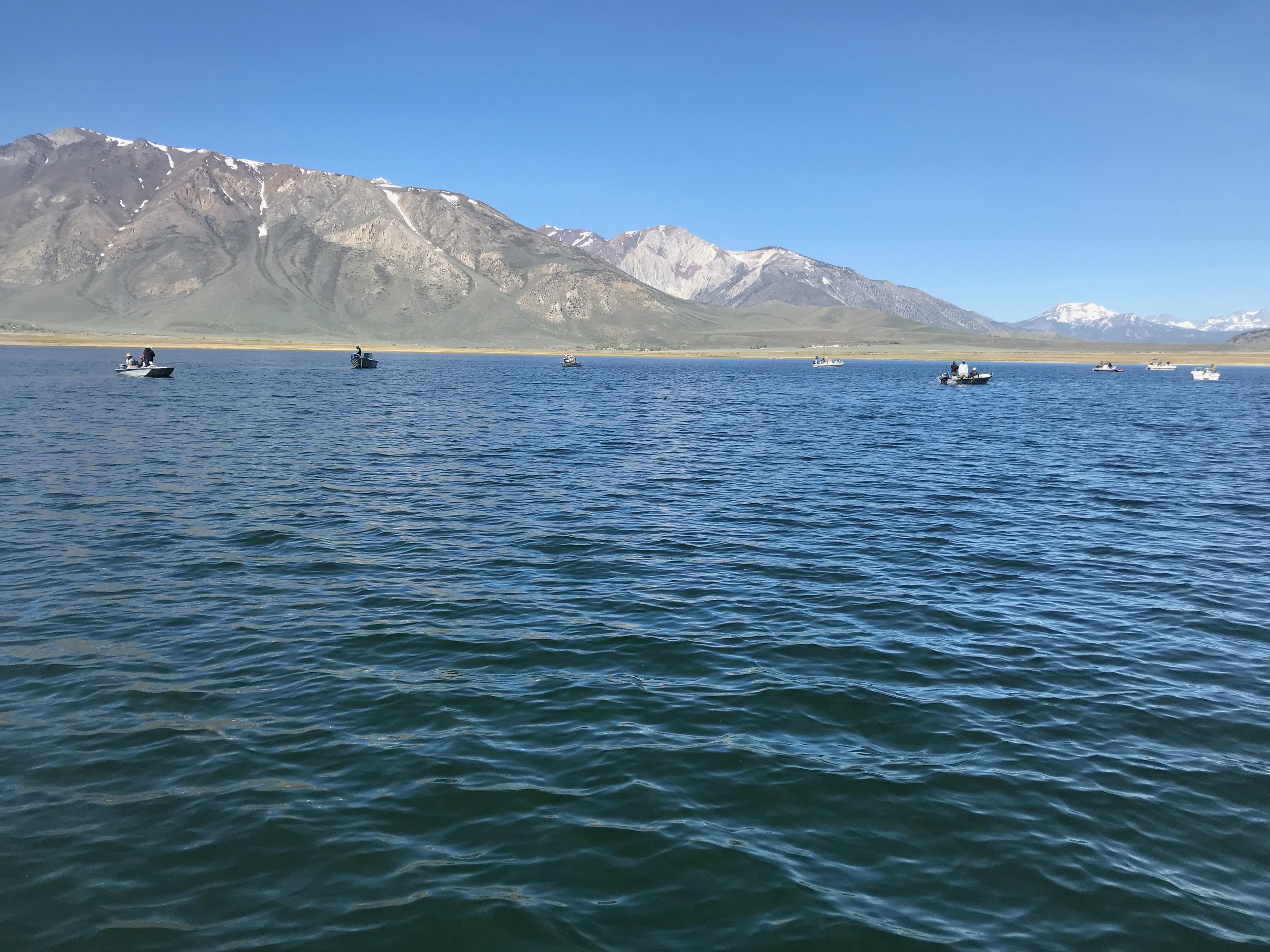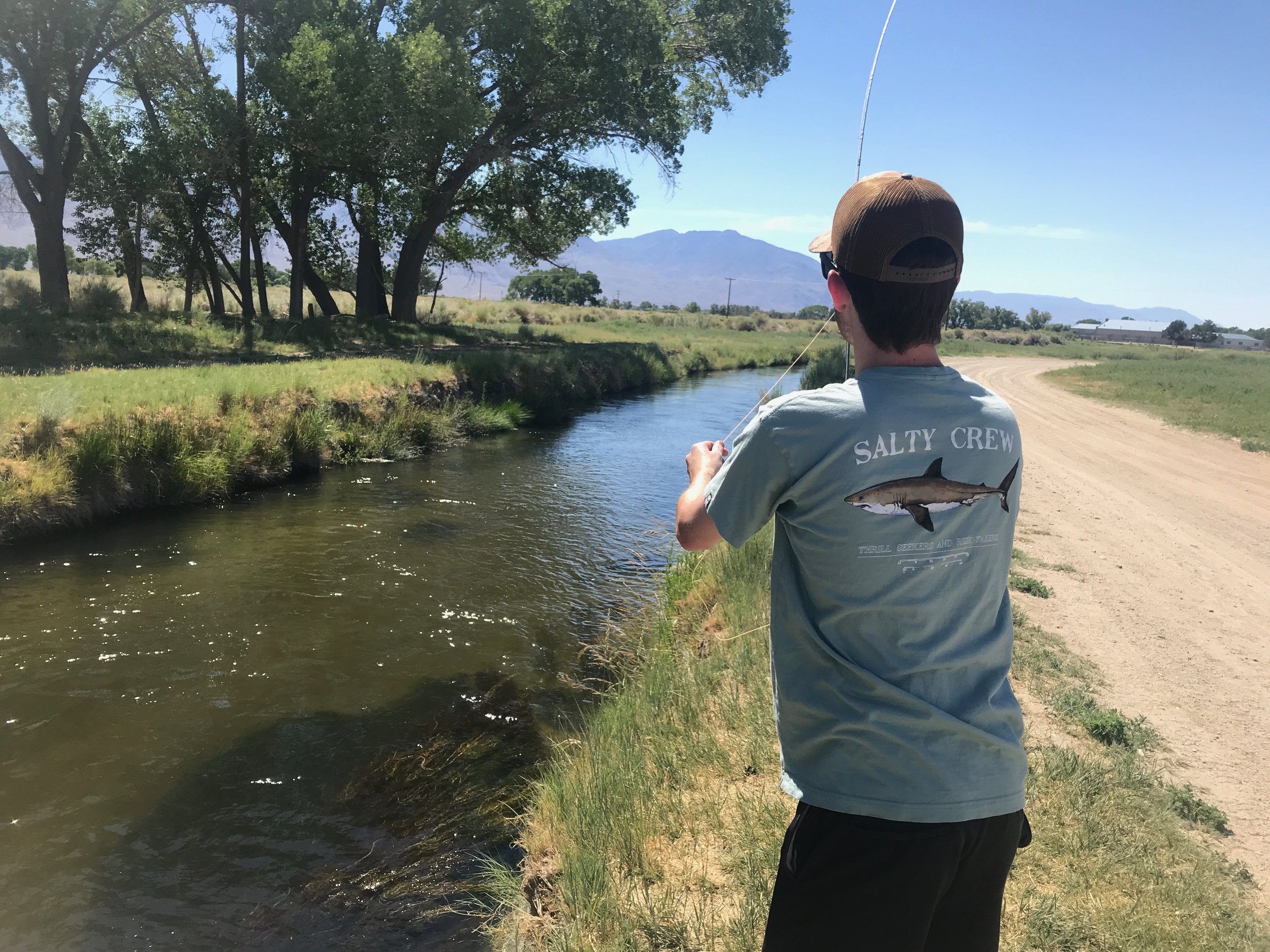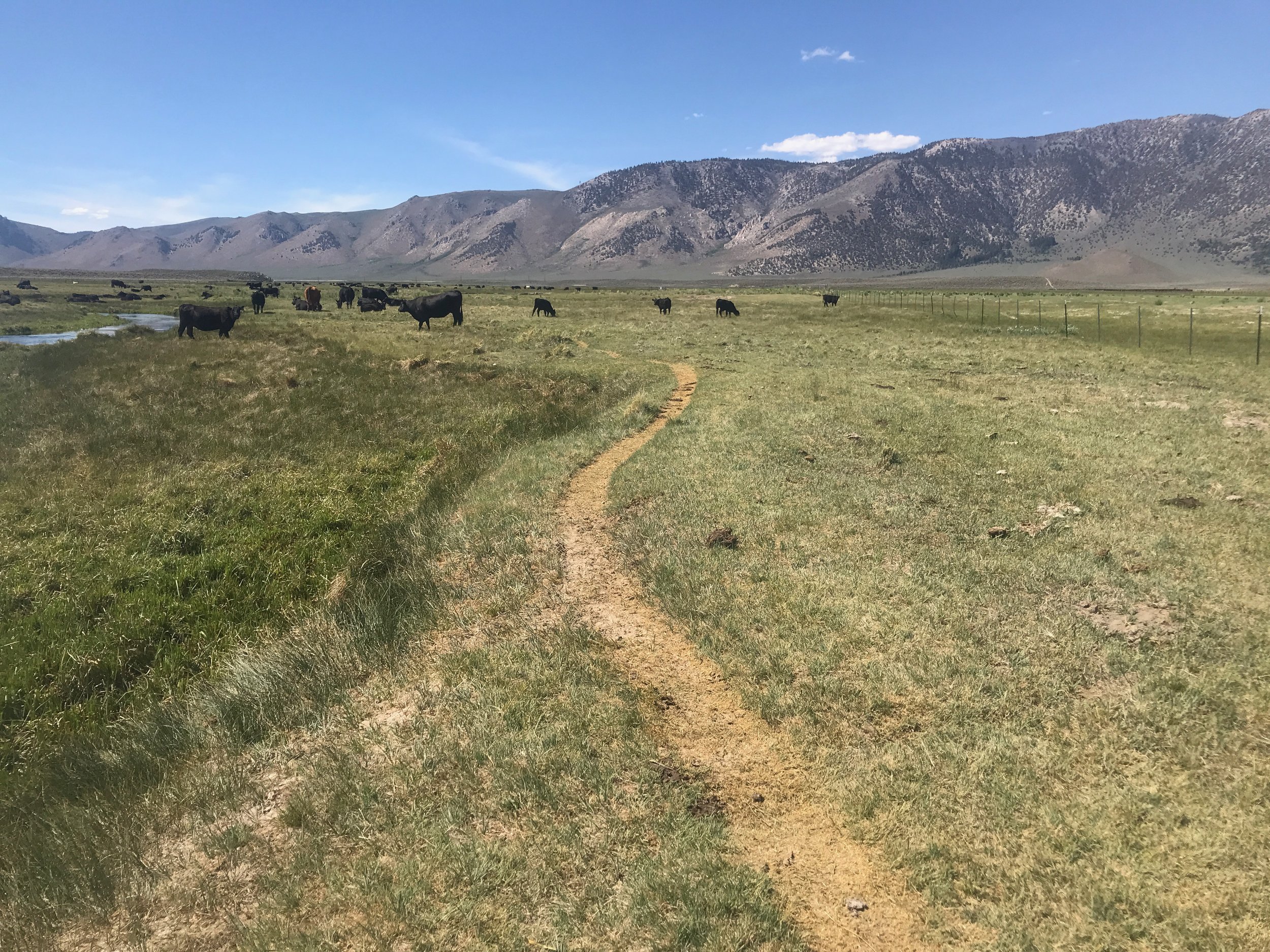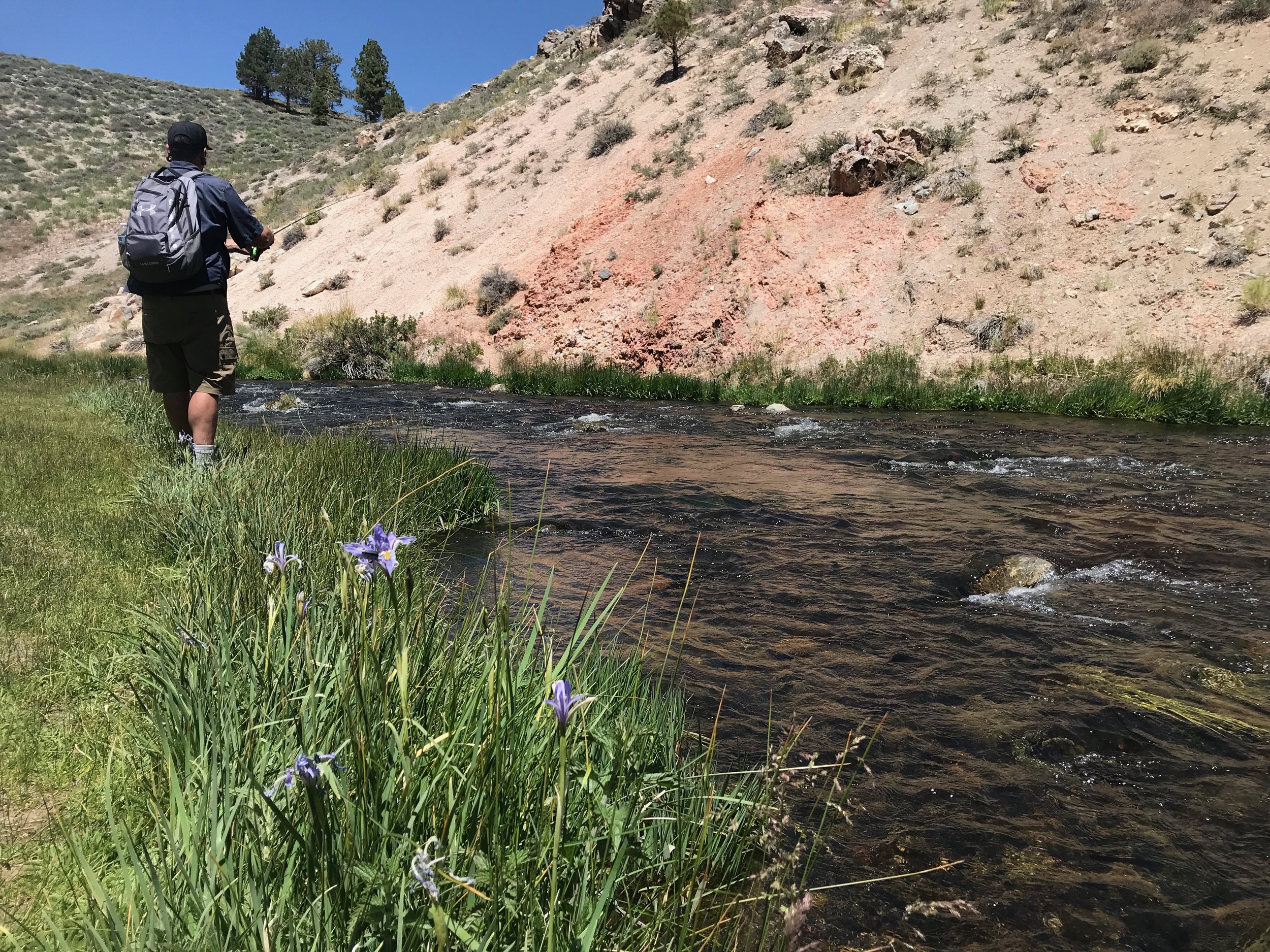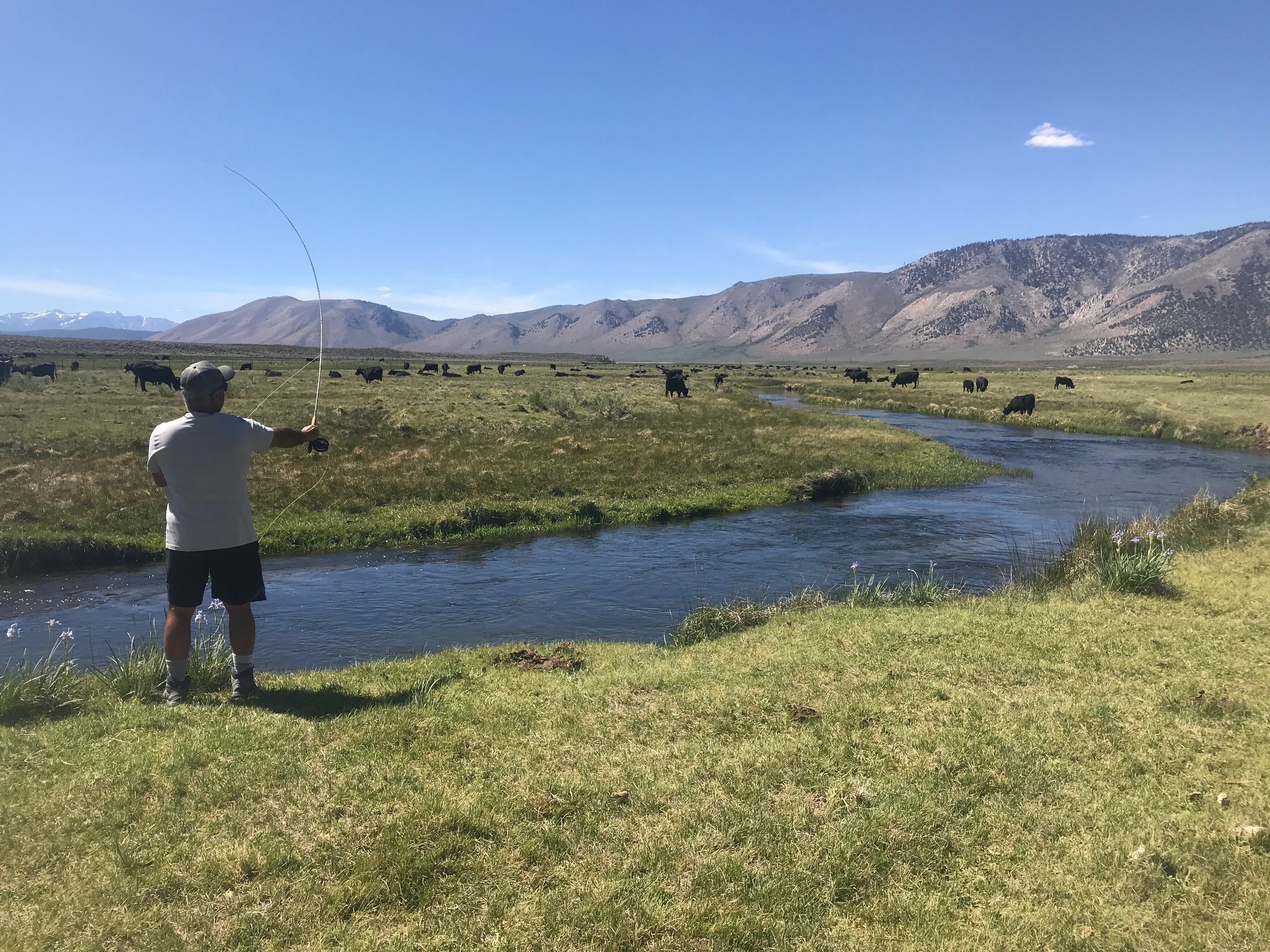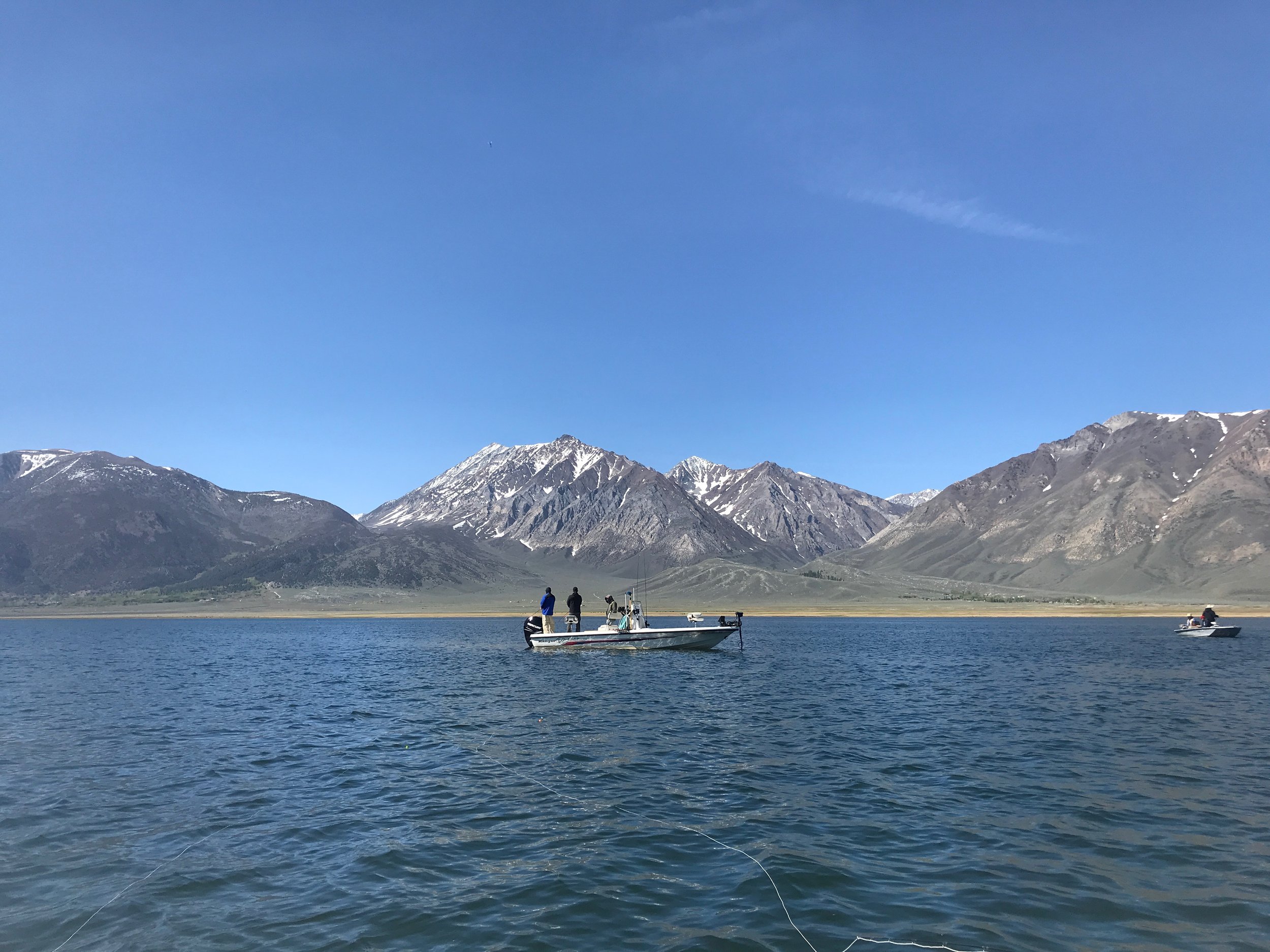A heat wave is moving through the Eastern Sierra this week with temperatures in the 100’s this week in the Owens Valley. Mornings are fine, but by mid-morning it’s time to head up the hill and find an altitude with a temperature that is comfortable for people and trout. Trico mayflies is the hatch that is getting the trout to feed on the surface. Hopper hatch has been minimal at most high altitude streams in the Eastern Sierra. Fall is right around the corner and so is trophy trout season.
David Hernandez from Imperial Valley is hooked up to a stocked rainbow trout that fell for a size 14 olive wooly bugger.
Freestone Streams:
Rock Creek:
This is a great creek to fly fish in the afternoons when other waters at lower elevations get too hot to safely practice catch and release. Dry flies or dry and a dropper will fool the opportunistically feeding trout. Fly fish with your favorite dry fly. The trout in the slow still water sections are super spooky and hard to catch if you don’t have a stealthy approach and a well placed cast. Even when I think I do everything right the trout still spook. The pocket water and riffles in the steeper sections are much more for giving as the trout are not as spooky.
A wild rainbow trout took a size 16 bed head flash back gold ribbed hare’s ear nymph fished three feet under a size 16 Adams parachute.
Bishop Creek
Middle Fork:
I’ve been exploring this section of Bishop Creek between Intake Two and Lake Sabrina. Lots of good pocket water and pools that hold wild brown trout and stocked rainbow trout. I’m using my standard dry dropper rig of a size 16 Adams parachute and a size 16 bead head flash back gold ribbed hare’s ear nymph. This rig produces lots of trout in this section of the creek.
Bush whacking and wadding in Bishop Creek is how you have to fish this creek for the wild brown trout and brook trout that are found in the pools and pocket waters.
Lower Owens River:
Wild Trout Section:
With the heat wave we’re having fly fishers need to be on the water early and off the water by late morning before the water temperatures get into the danger zone of above 70 degrees. There is a short lived morning bite when the trico mayflies are hatching. The trico mayflies go from emerger to dun to spinner in a very short amount of time. Usually within a couple of hours. It’s the spinner fall that the trout key in on. A trico spinner pattern in a size 22 will fool the wild brown trout that are feeding on the dead trico spinners. Late evening there is caddis activity that has the trout actively feeding again.
Wading early in the morning when the trico mayfly hatch is on is producing wild trout for fly fishers wading the river.
Hot Creek:
Interpretive Site:
Fly fishing here has been consistent with a trico mayfly hatch in the morning. It’s followed by a blue wing olive hatch that is followed by a gray caddis hatch. By 1:00 P.M. most days the activity is over until the late evening caddis hatch starts up. Fly fishing here is usually really good or terrible depending on your skill set. If you can match the stage of the insect that is hatching, the trout are feeding on, and present the fly pattern on a drag free drift you will have success. If you can’t do both of these, the fly fisher will be extremely frustrated.
Unlike spring on Hot Creek the weed beds are now fully mature and making fly fishing tough in the canyon.
Hot Creek:
Canyon Section:
Mature weed beds makes this the toughest time to be fly fishing in the canyon section. To be successful fly fishers need their flies to float or drift in the tiny channels between the weed beds. Easiest way to fish this is with dry flies. Trico mayflies, bluewing olive mayflies, and gray caddis are hatching. Fishing dry flies in these channels will produce wild trout if you can get a drag free drift. Getting a drag free drift is easier said than done.
Cheyne Skasick with a rainbow trout caught on a Euro nymph rig while fly fishing a morning on the upper Owens River.
Upper Owens River:
Above Benton Crossing Bridge:
With the warmer weather fly fishers need to be diligent about monitoring the water temperature. Seventy degrees is the break point for safe catch and release fly fishing. Be sure to quit fishing when the water temperatures exceeds 70 degrees. A morning trico mayfly hatch has the trout actively feeding on the surface for a couple of hours. Following the trico hatch is a caddis hatch. Once these two hatches are done the fly fishing comes to a standstill. With no significant number of hoppers around to bring the trout to the surface after noon flyfishing is nonexistent. There has been an evening mayfly hatch and caddis activity starting around 6:00 P.M. Mosquitoes have been a problem early and late in the day on the Owens River.
The trico mayfly hatch was all but over by 9:00 A.M. on Bishop Creek Canal.
Bishop Creek Canal:
Behind the Ford Dealer:
With 100 degree days in the Owens Valley I’m off the canal by mid-morning as the water temperatures are too high to safely practice catch and release. Be sure to monitor the water temperature and quit catch and release fishing when the temperatures exceed 70 degrees. The trico hatch is starting early in the morning and has been over by 9:00 A.M. This is a great hatch to fish in the morning and then head up the hill to find one of my favorite freestone creeks to fish for opportunistically feeding wild trout. I’m using size 24 trico spinners on 6X tippet. To fool these trout fly fishers need to time there drift so it’s in tune to the rhythm of the feeding trout. The trout will ignore your imitation if you do not present it on a drag free drift.










